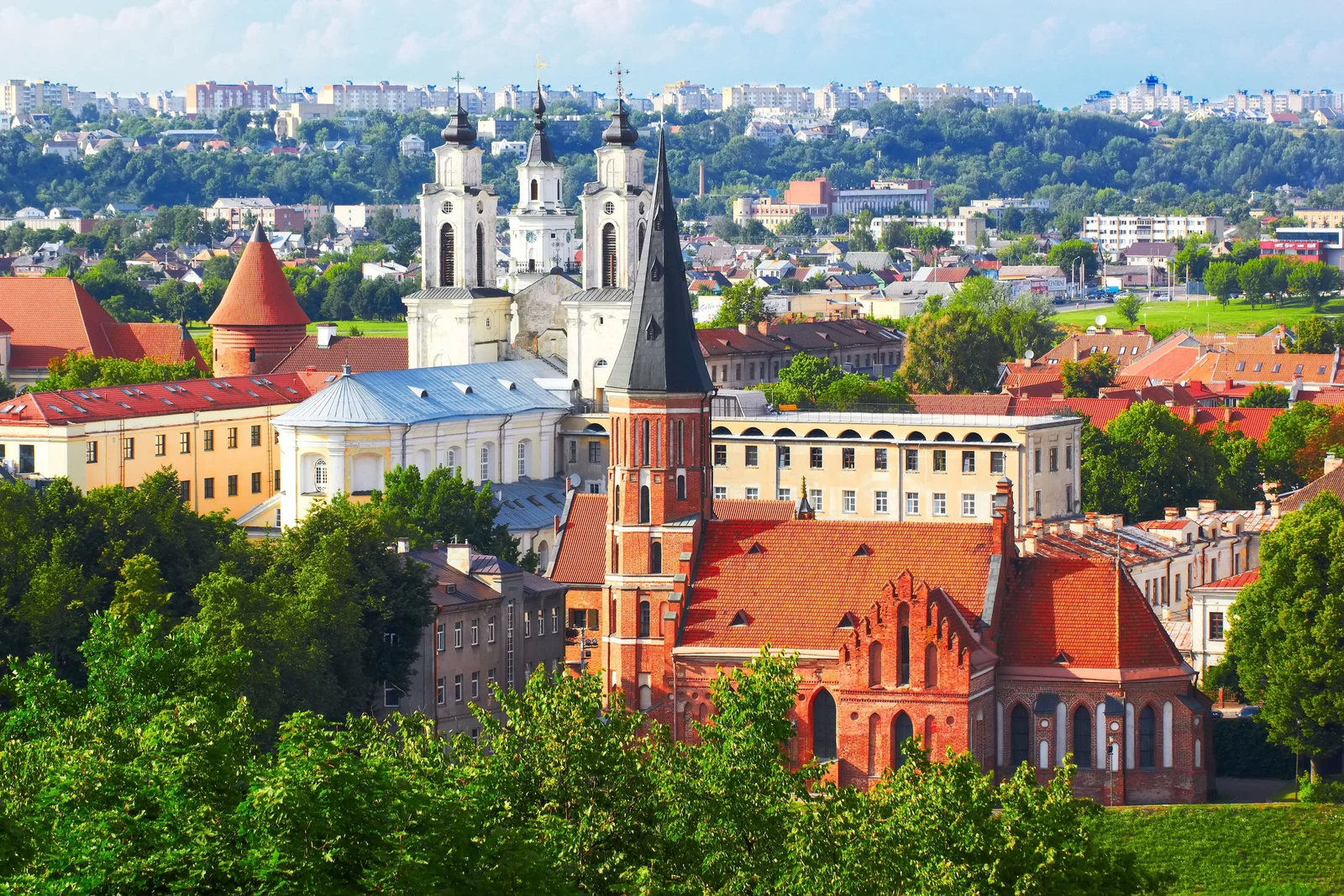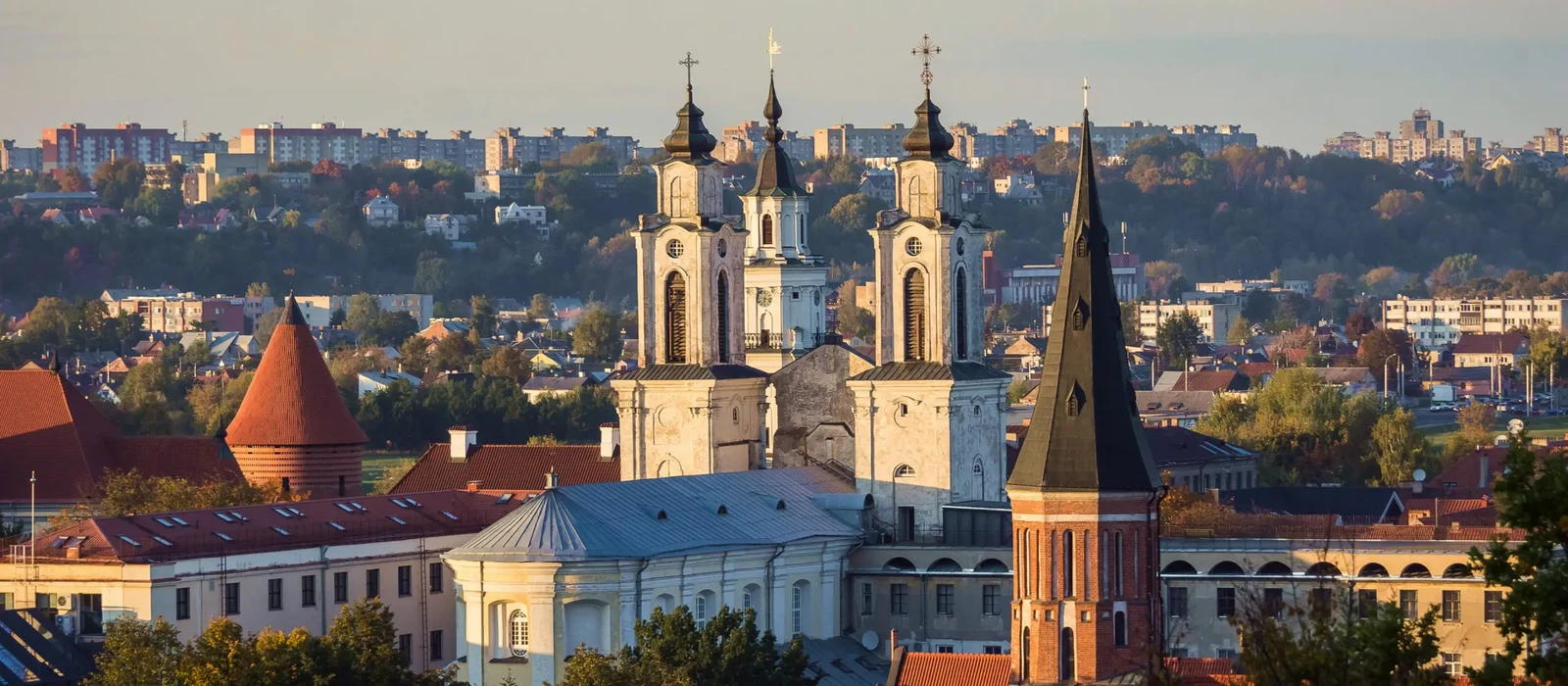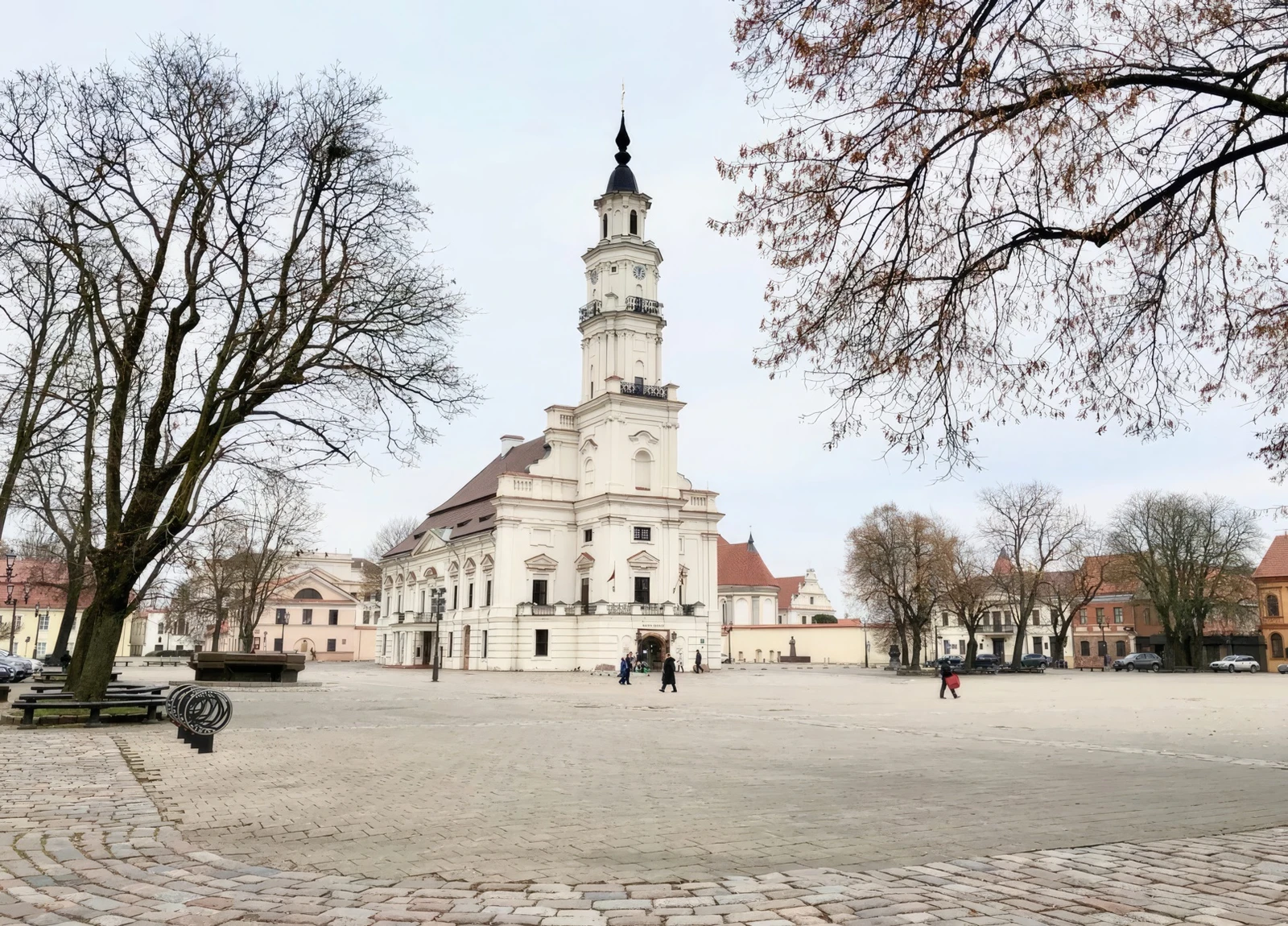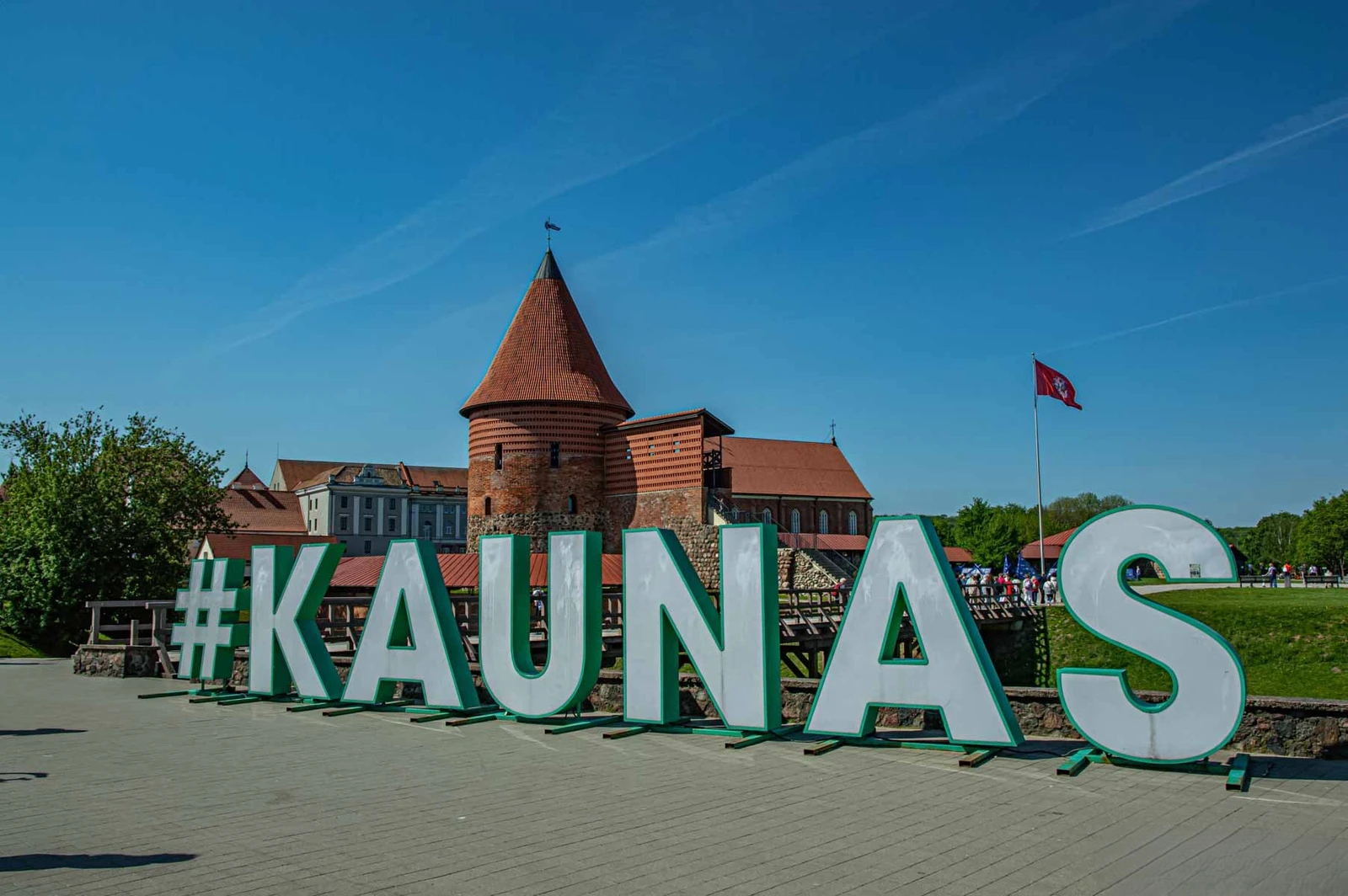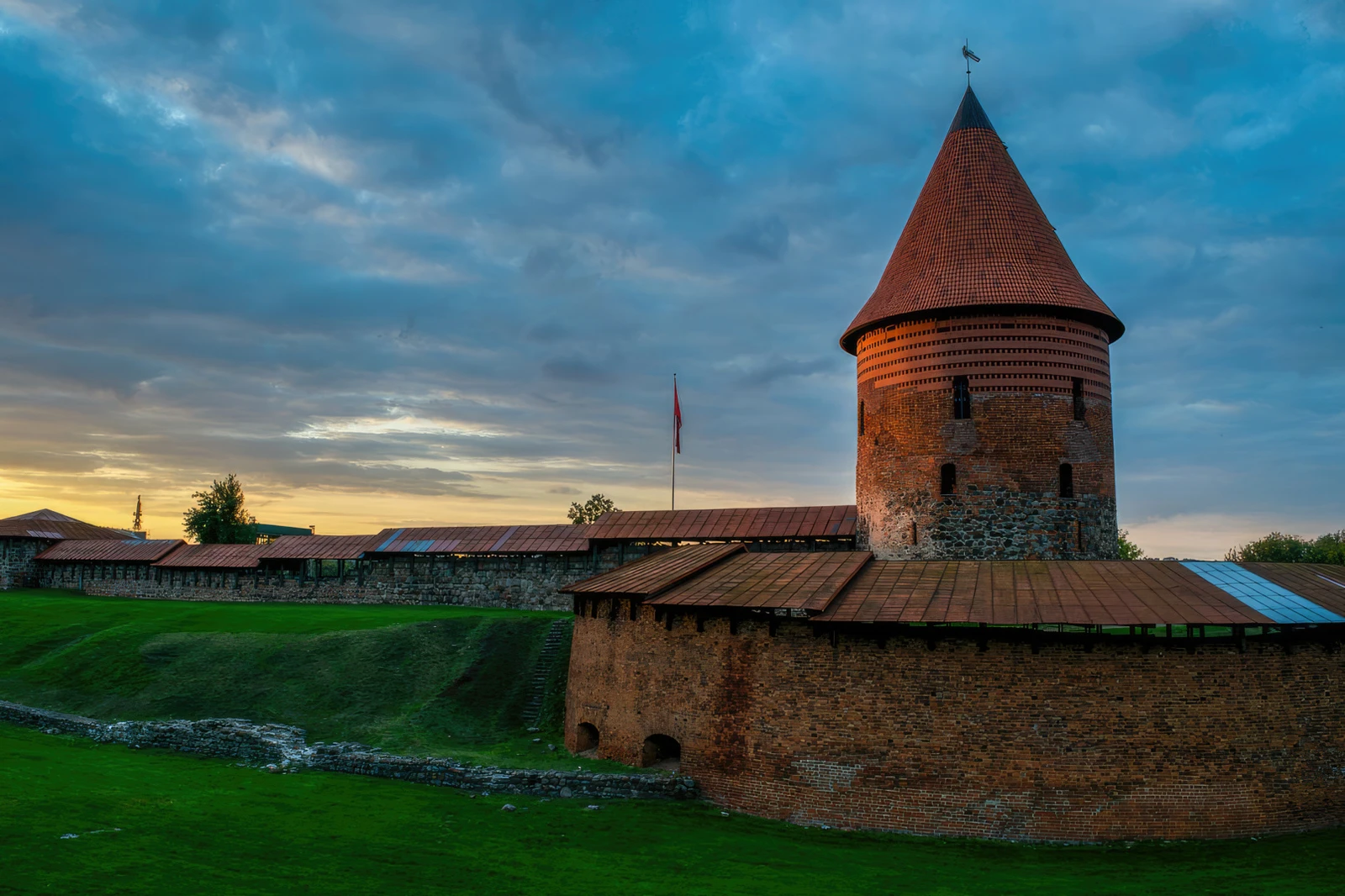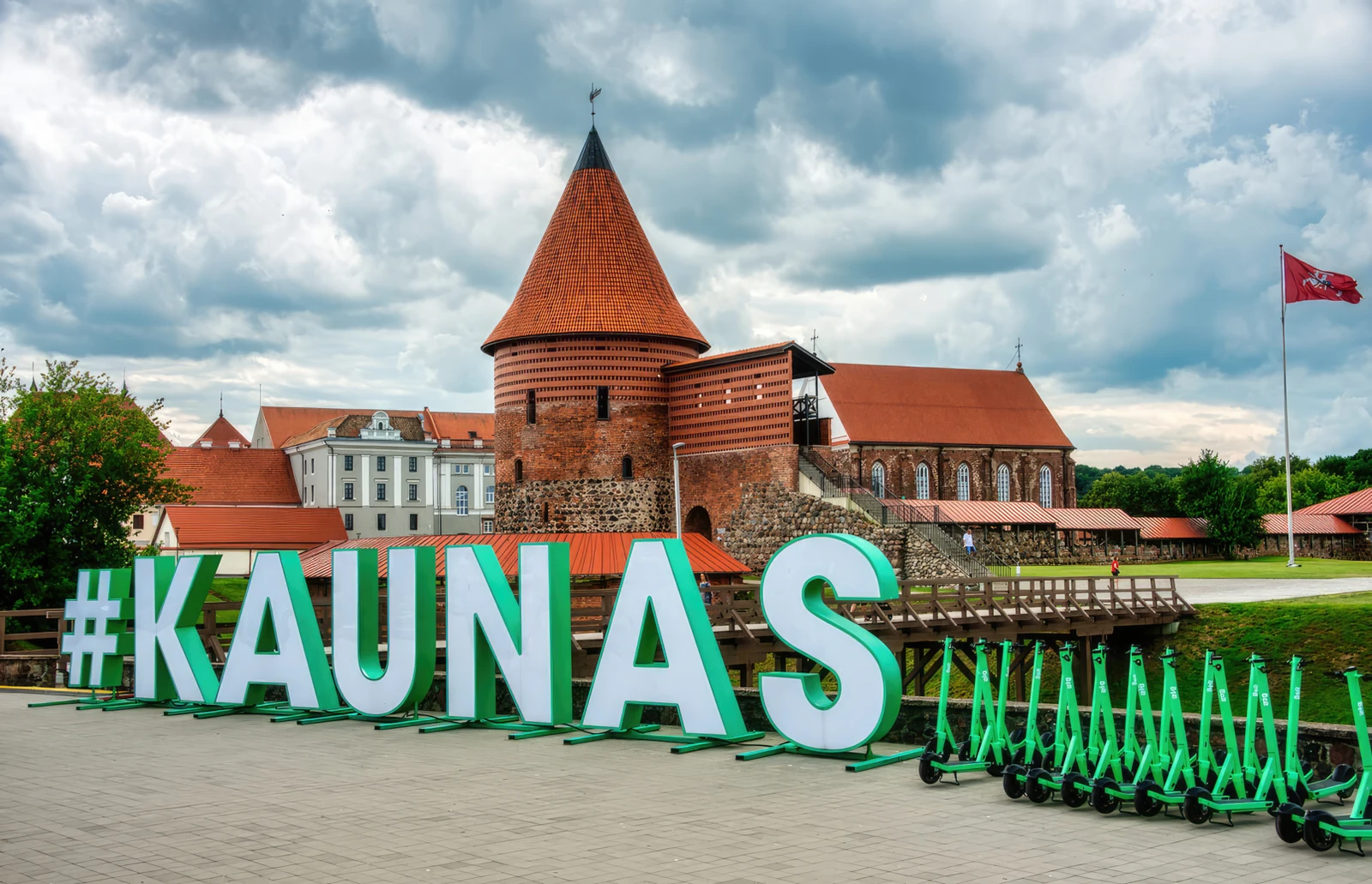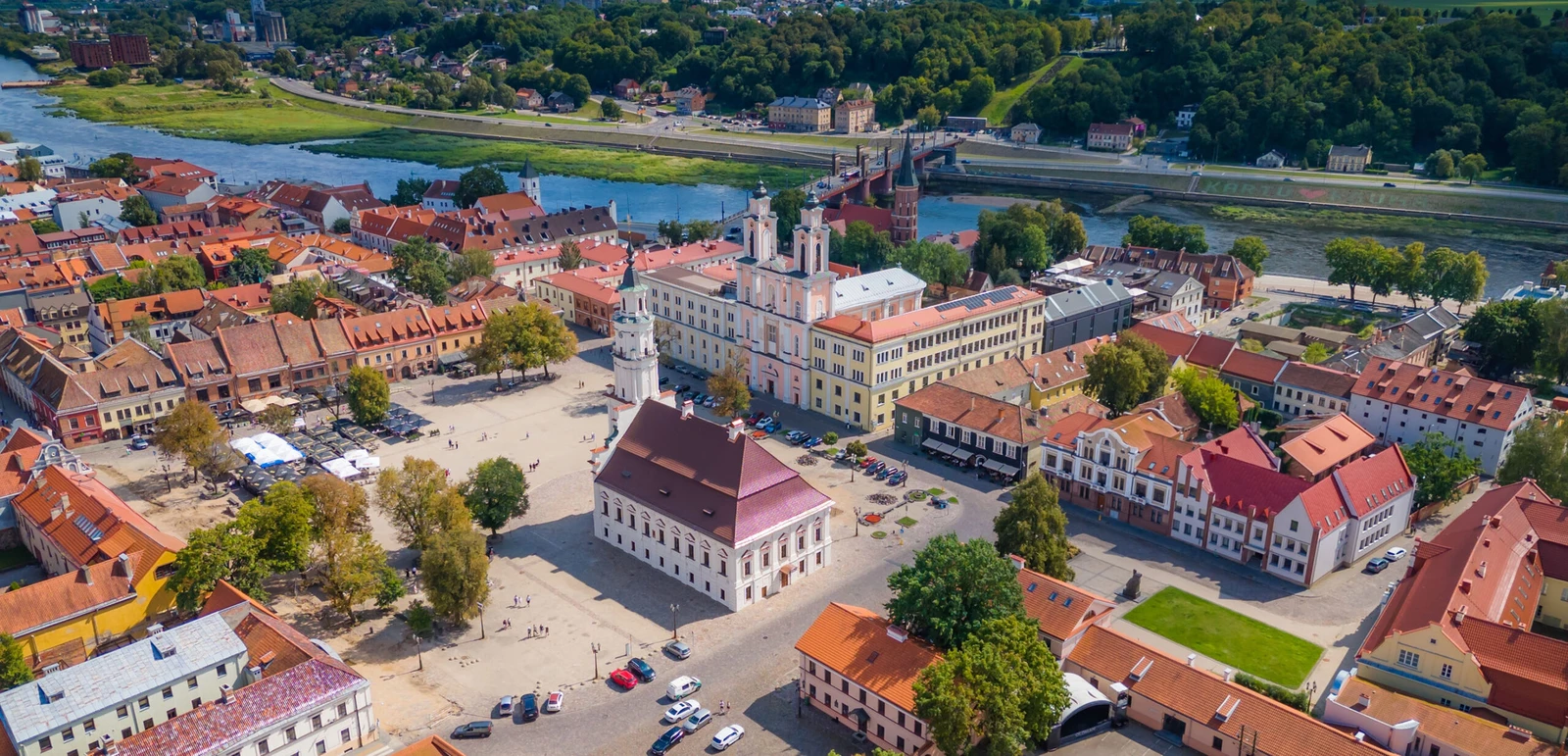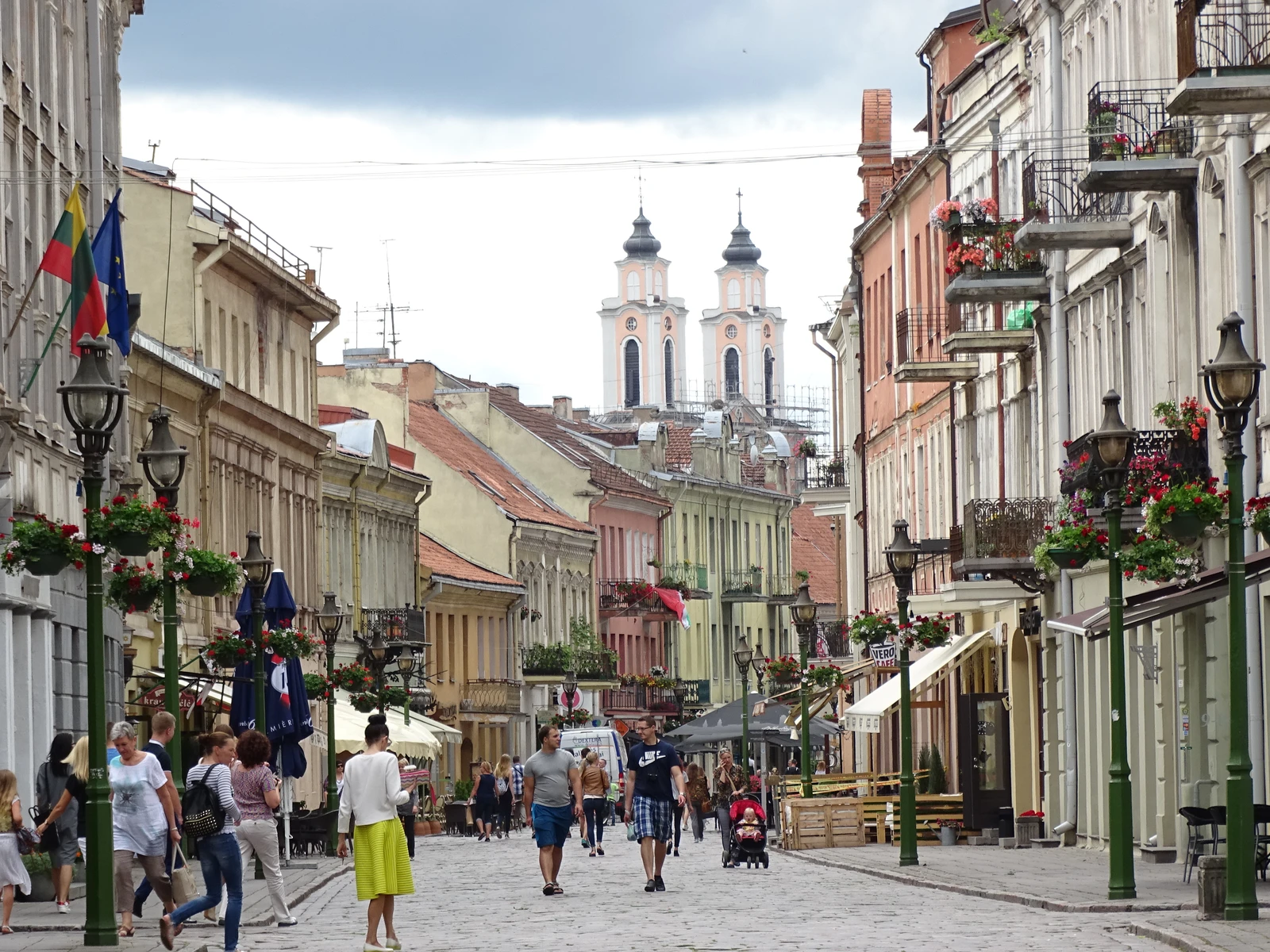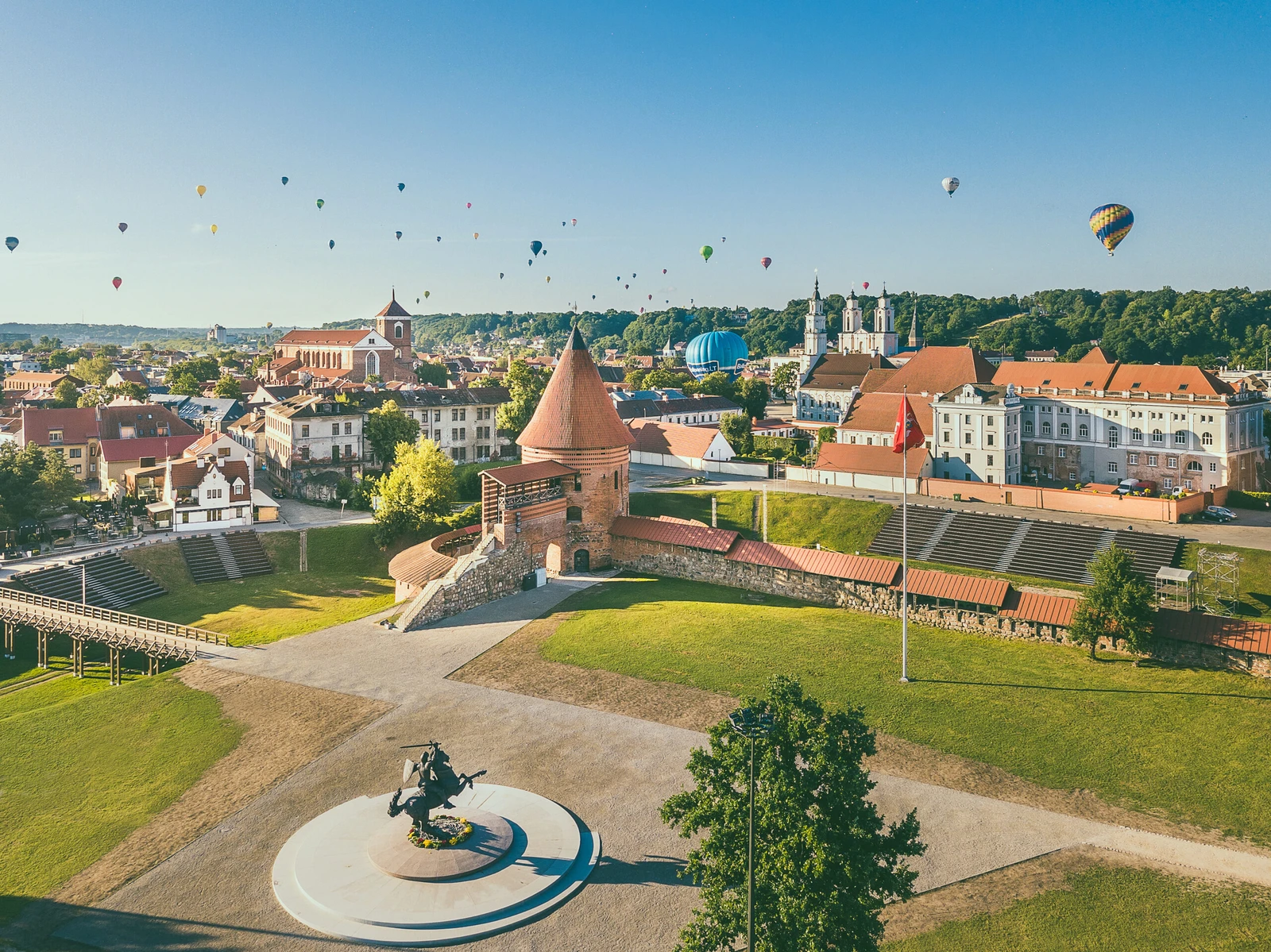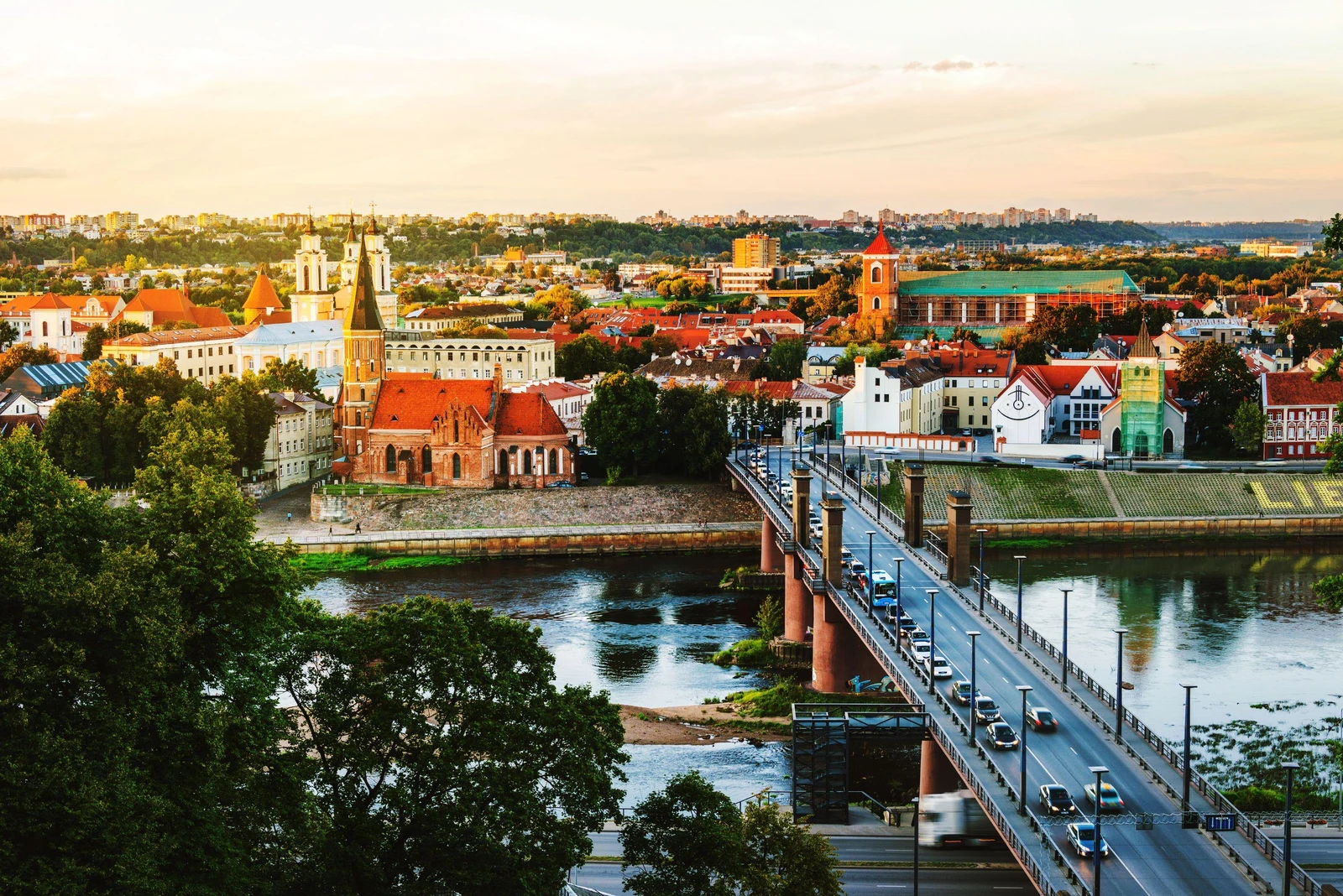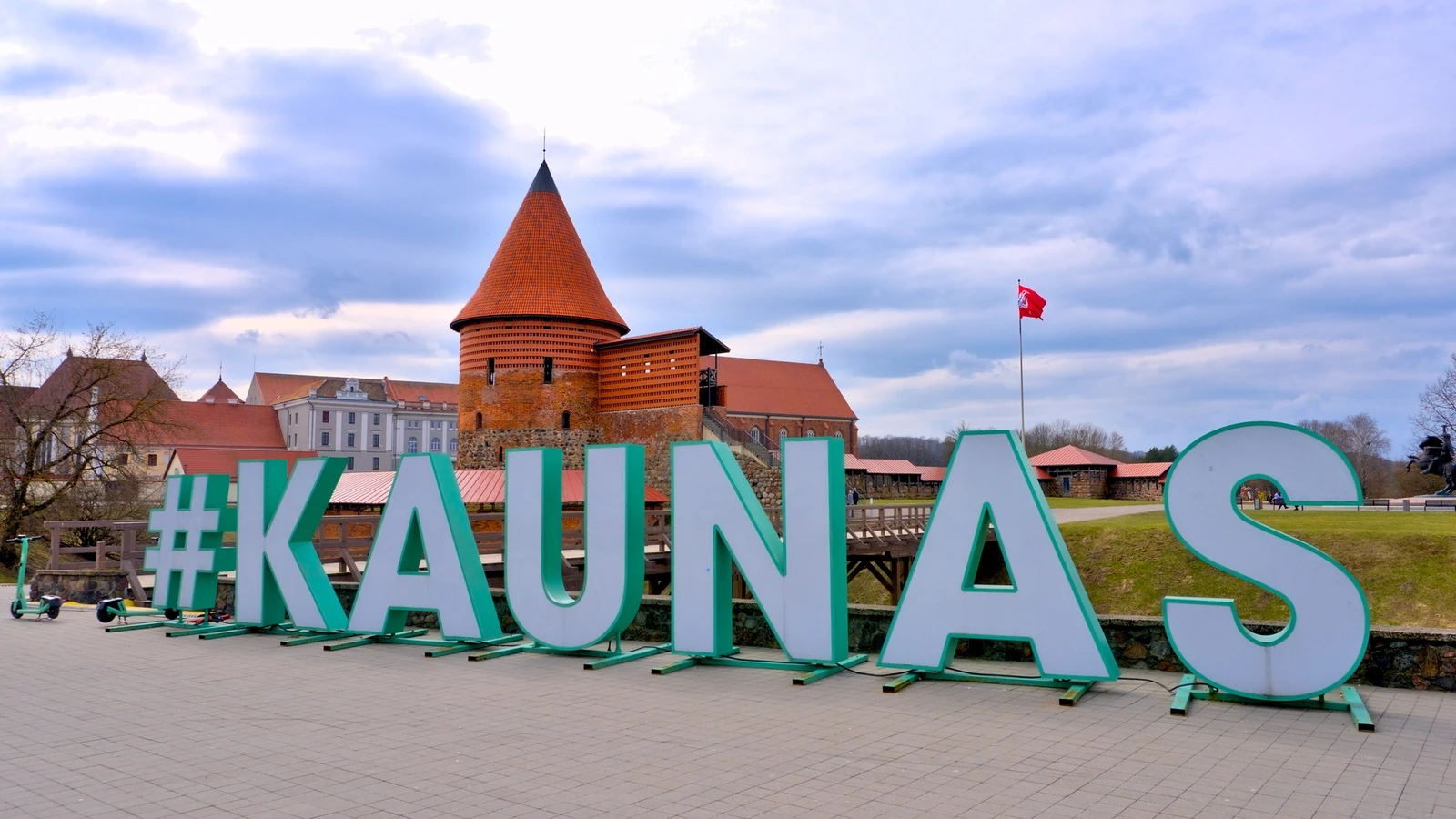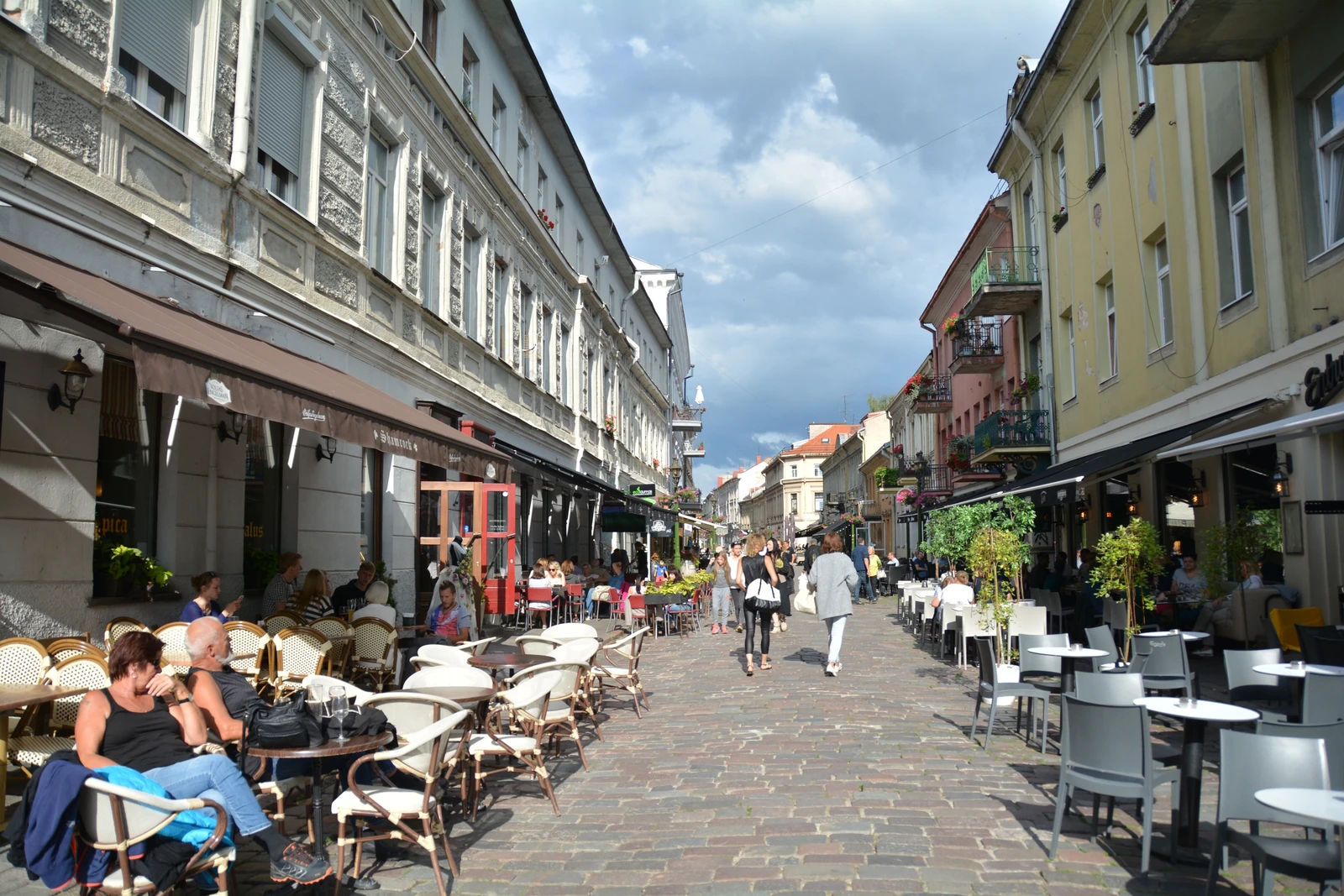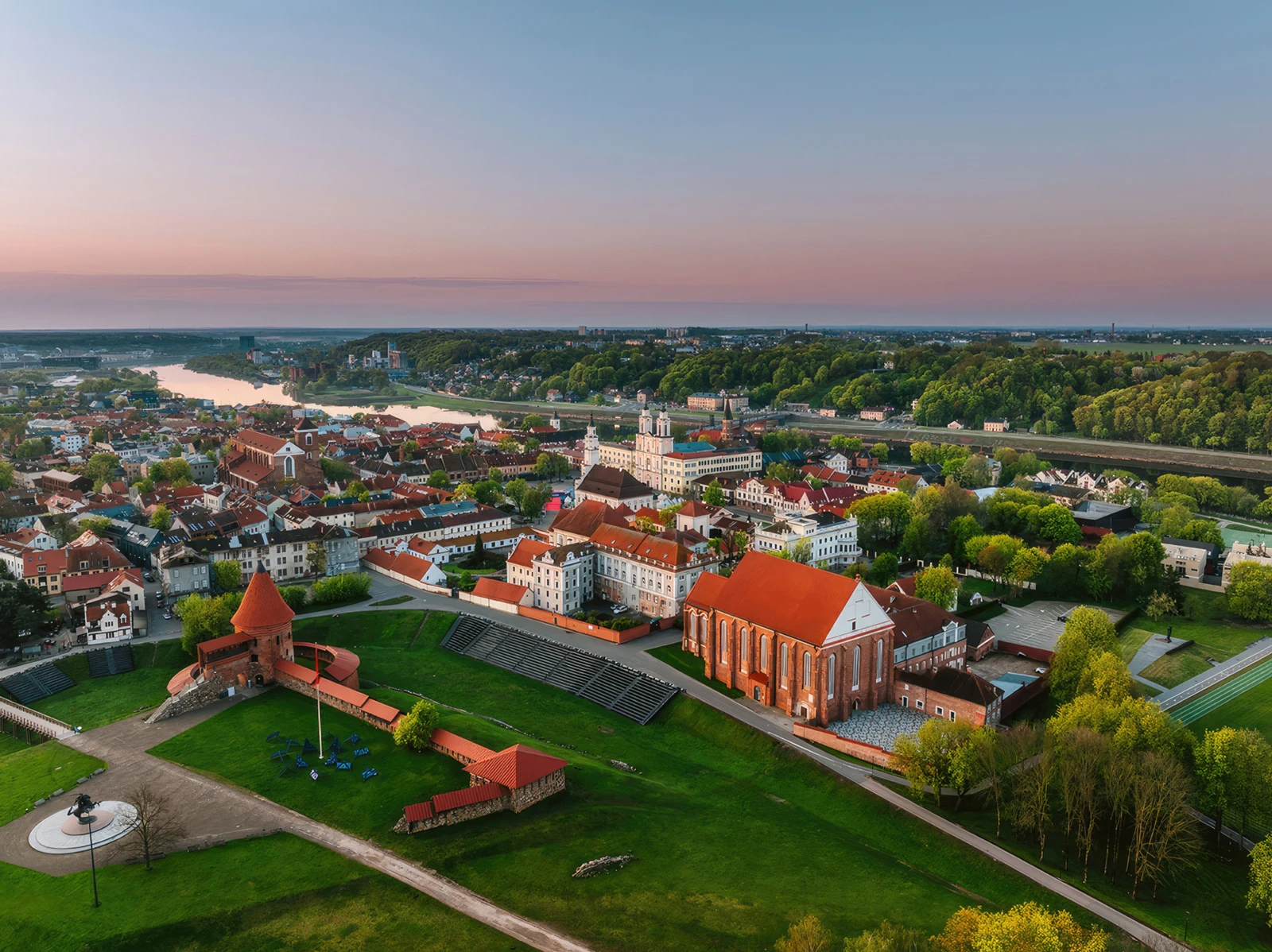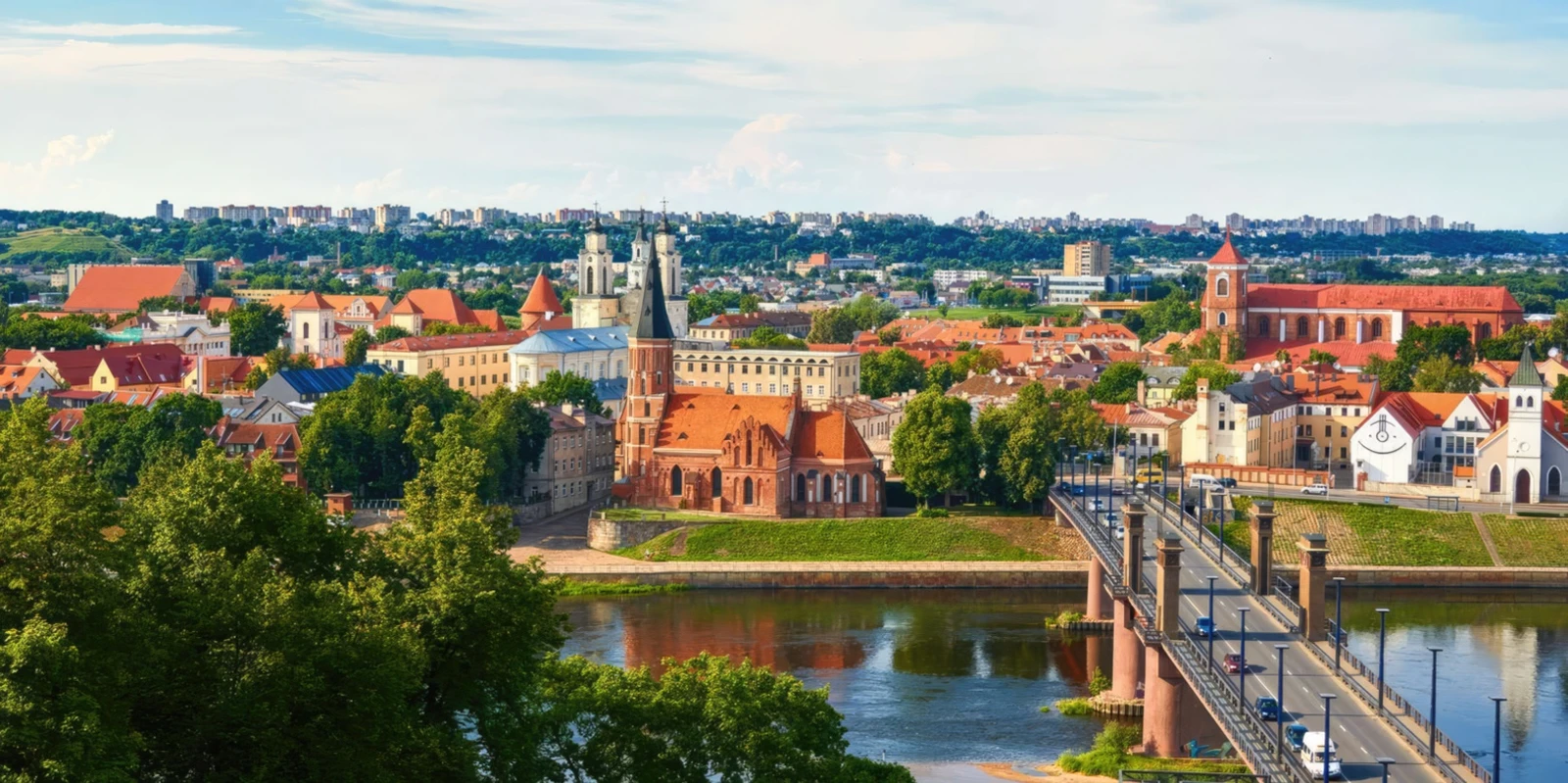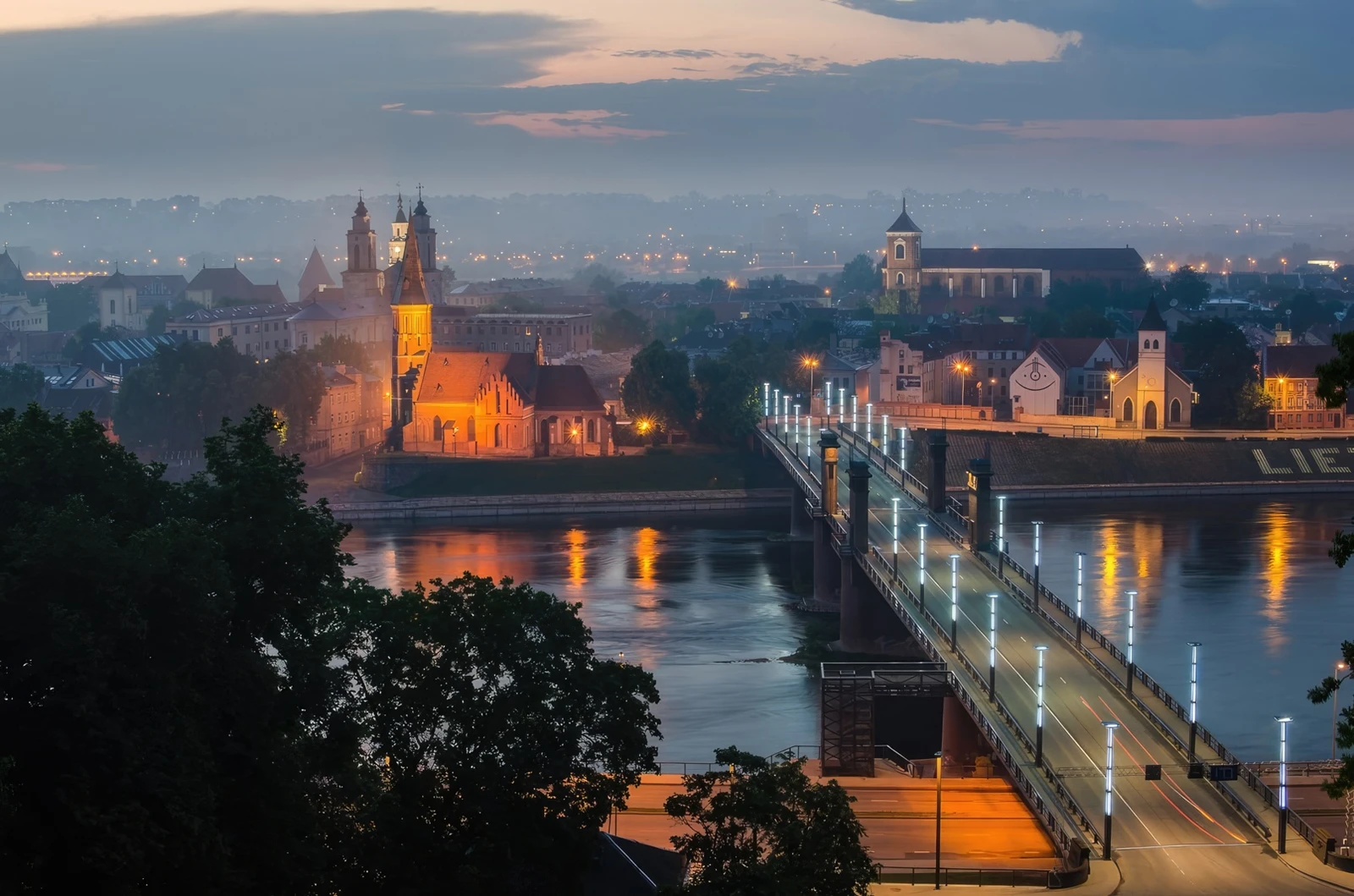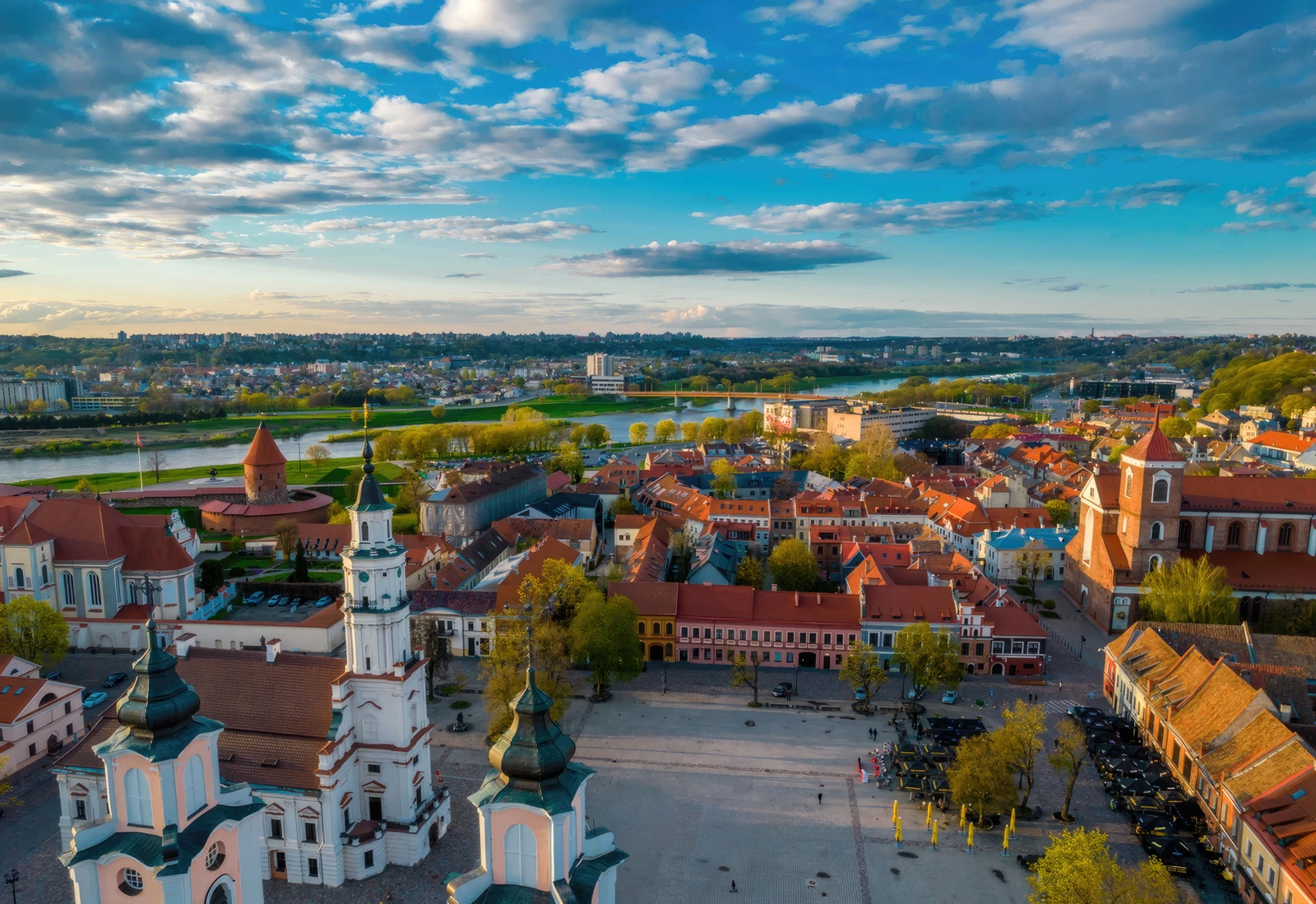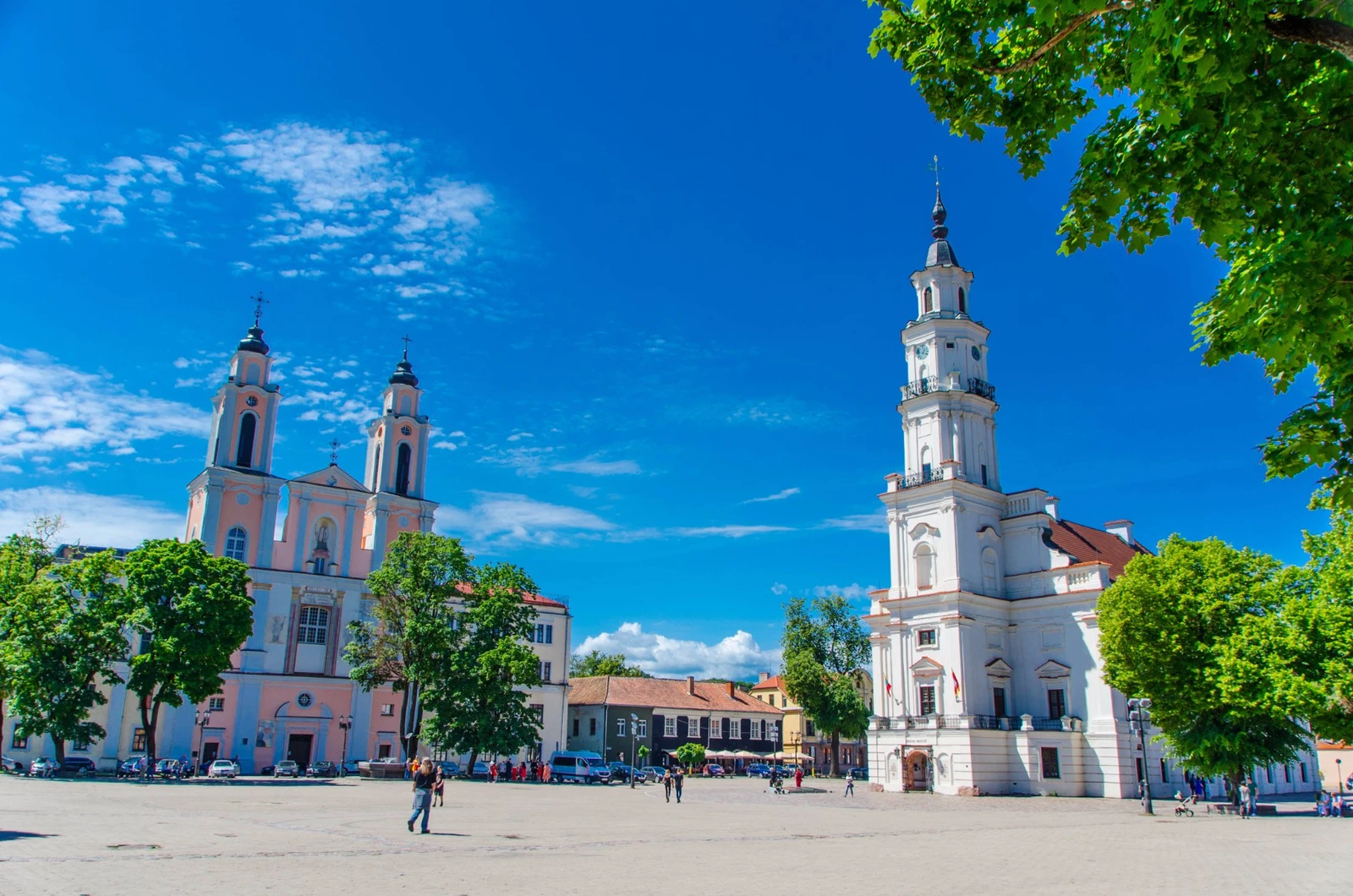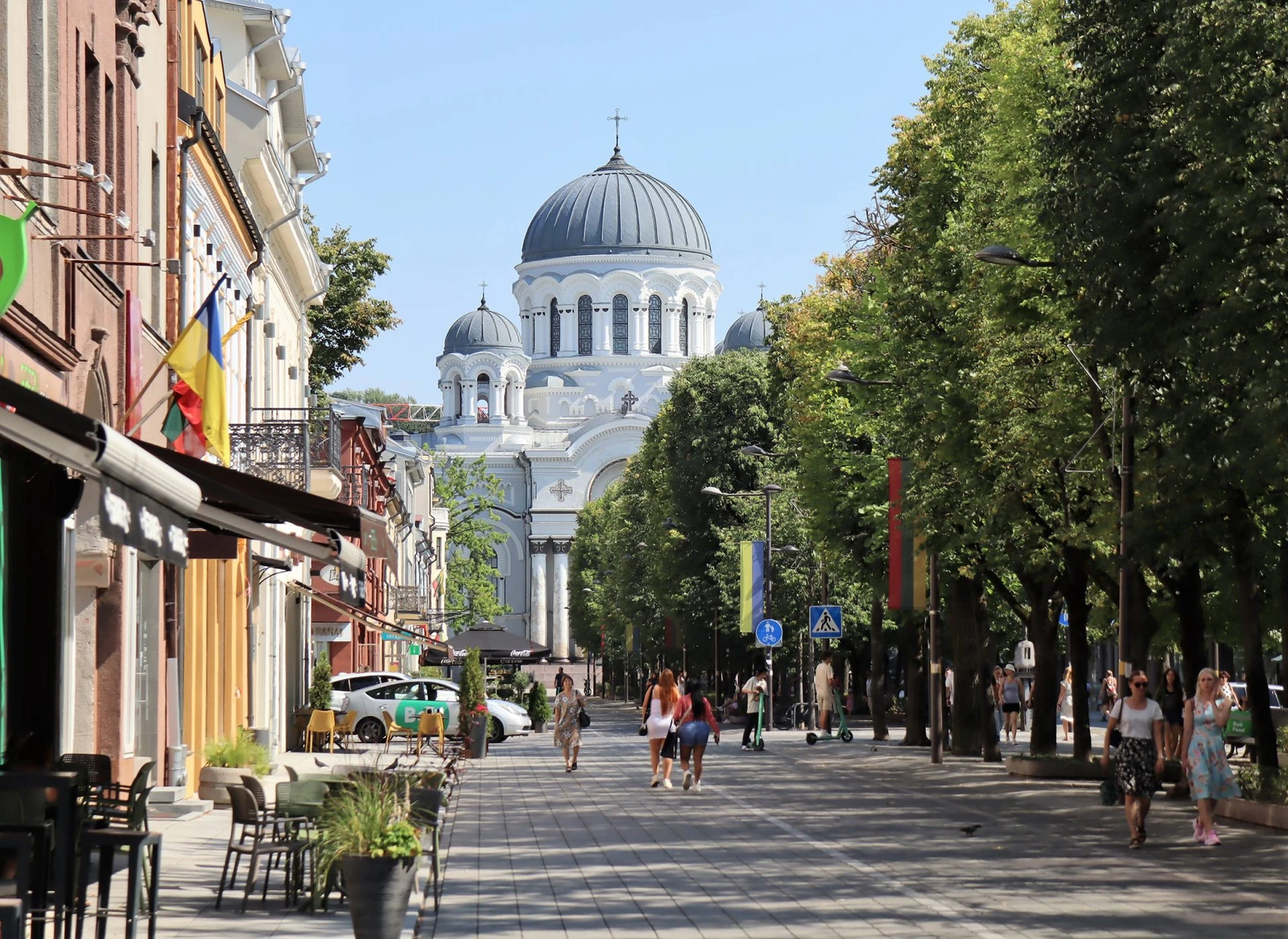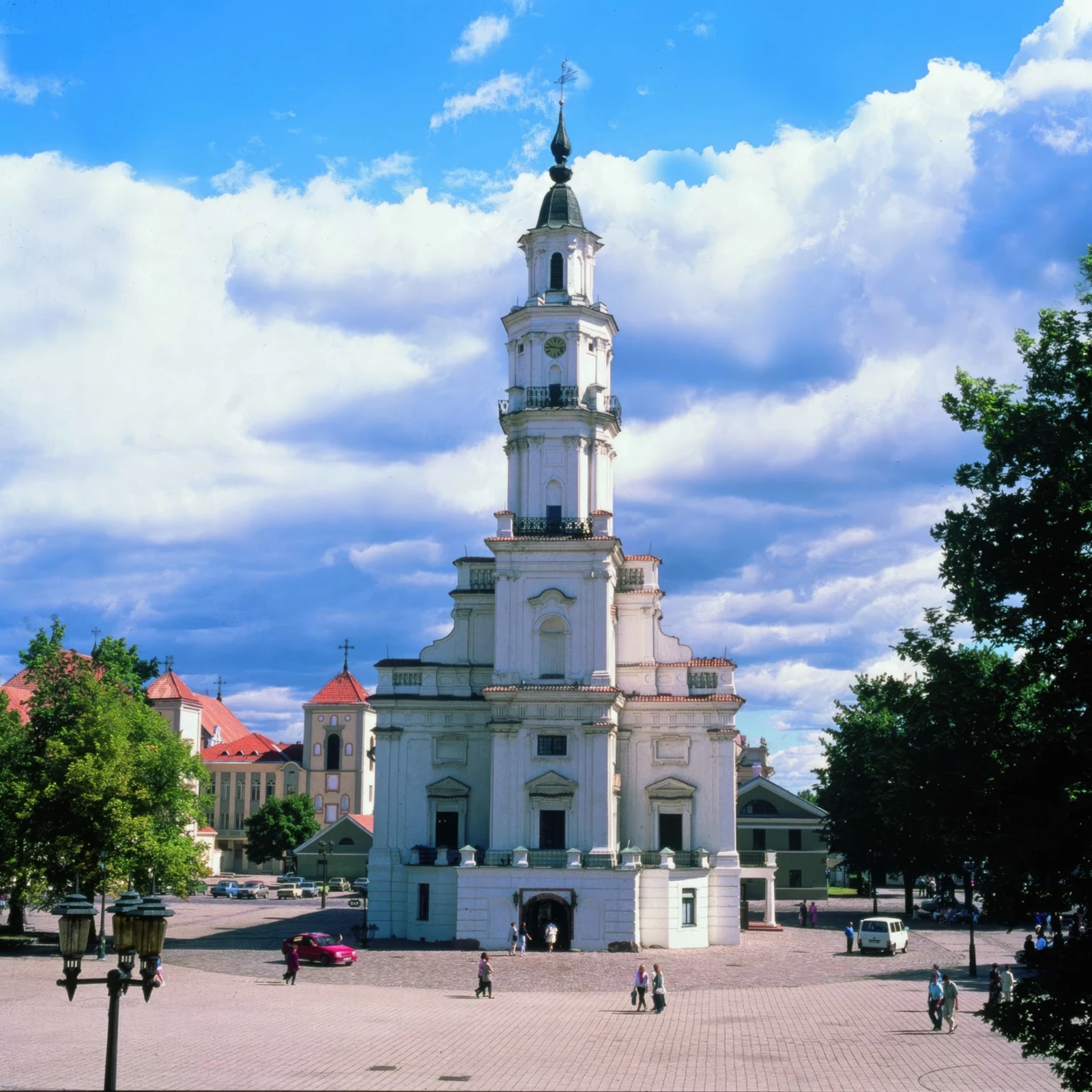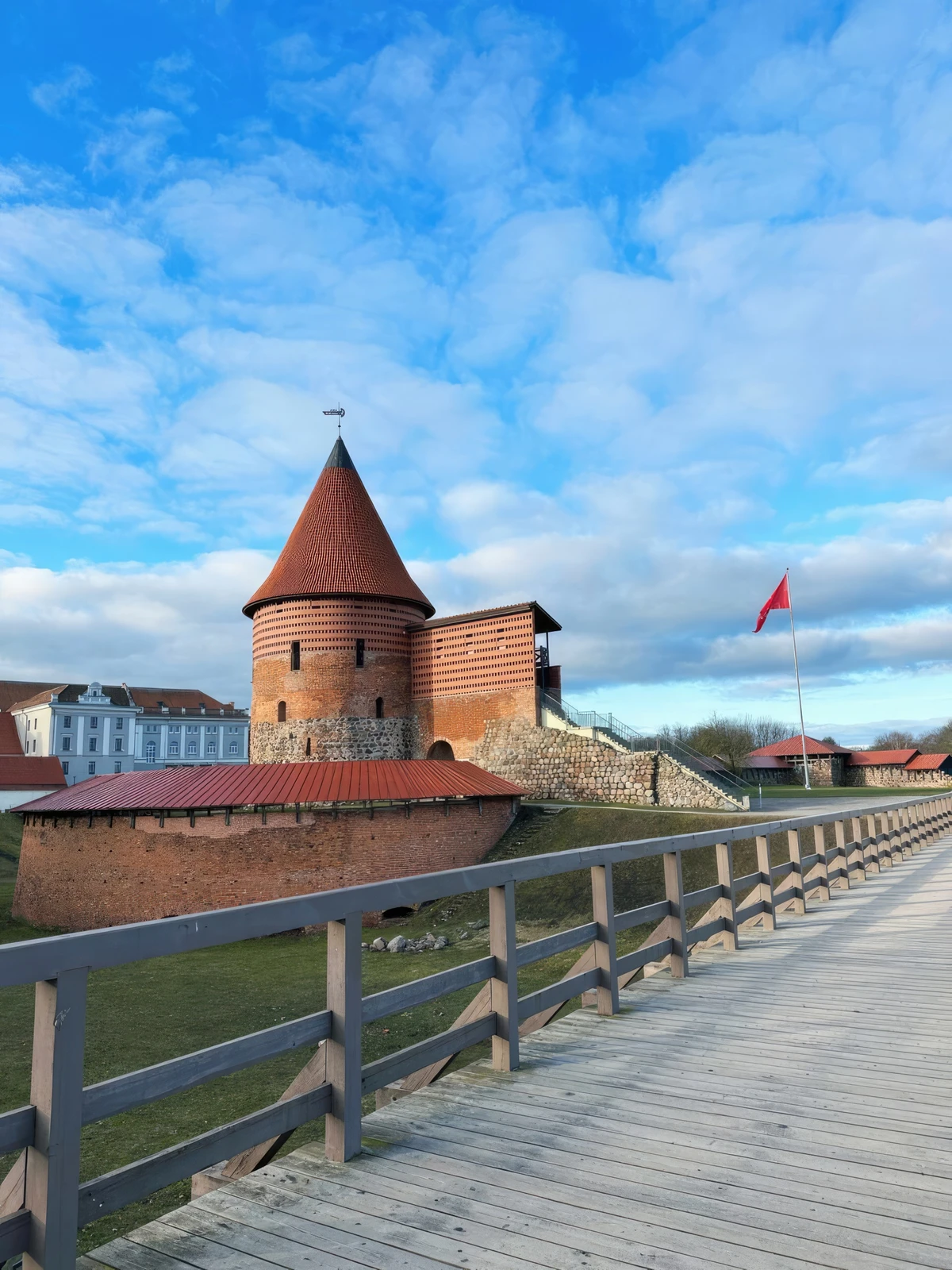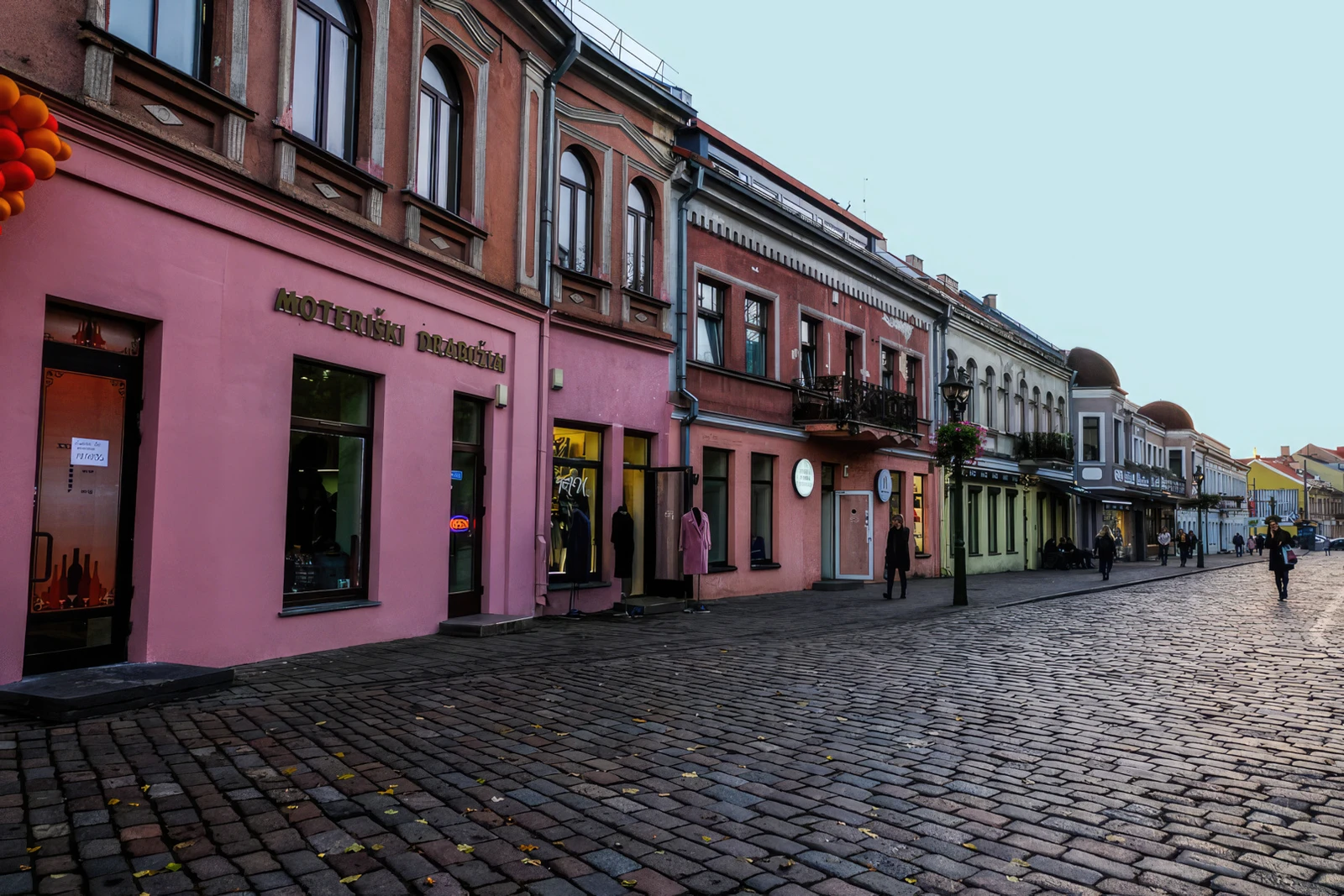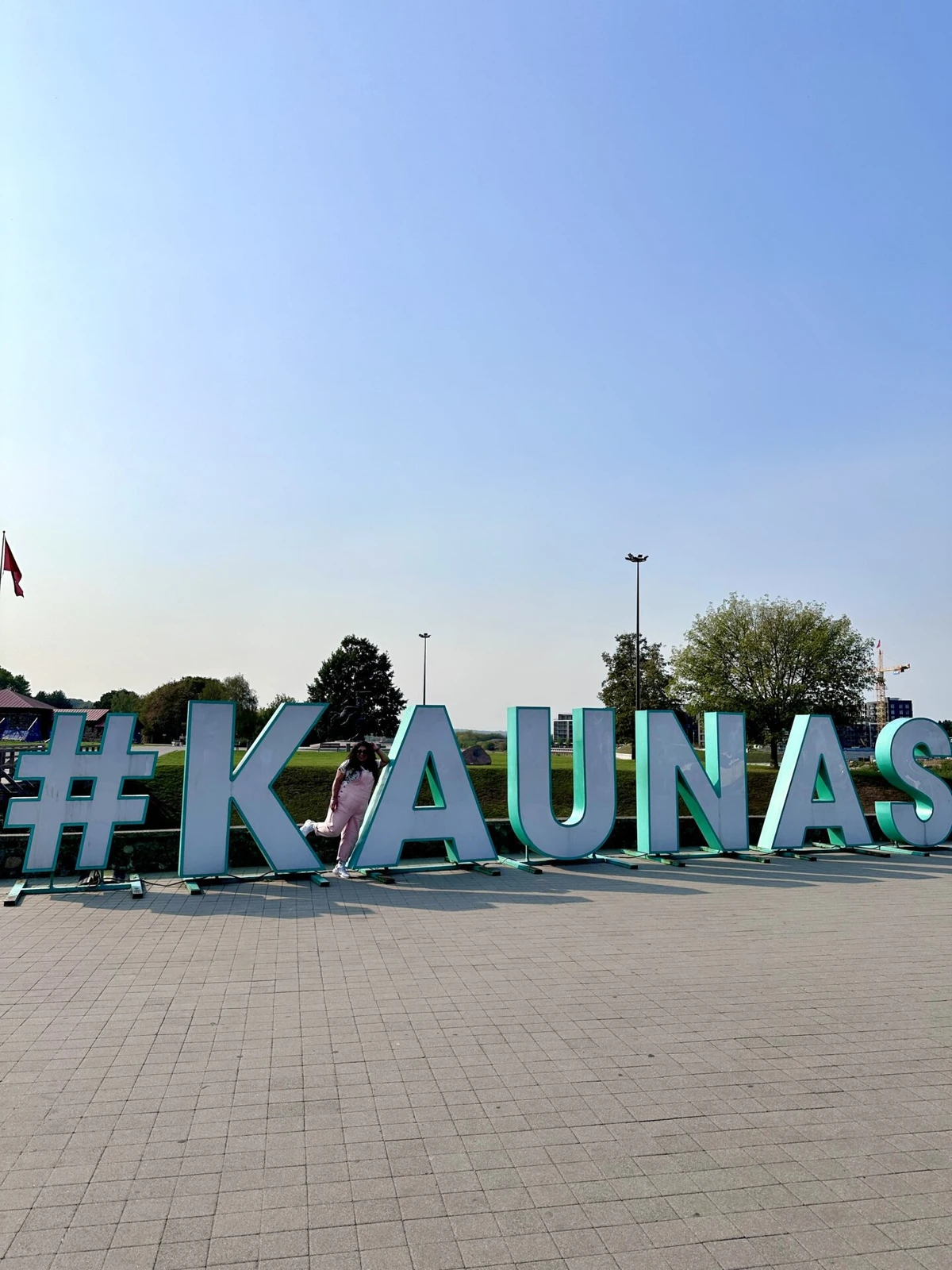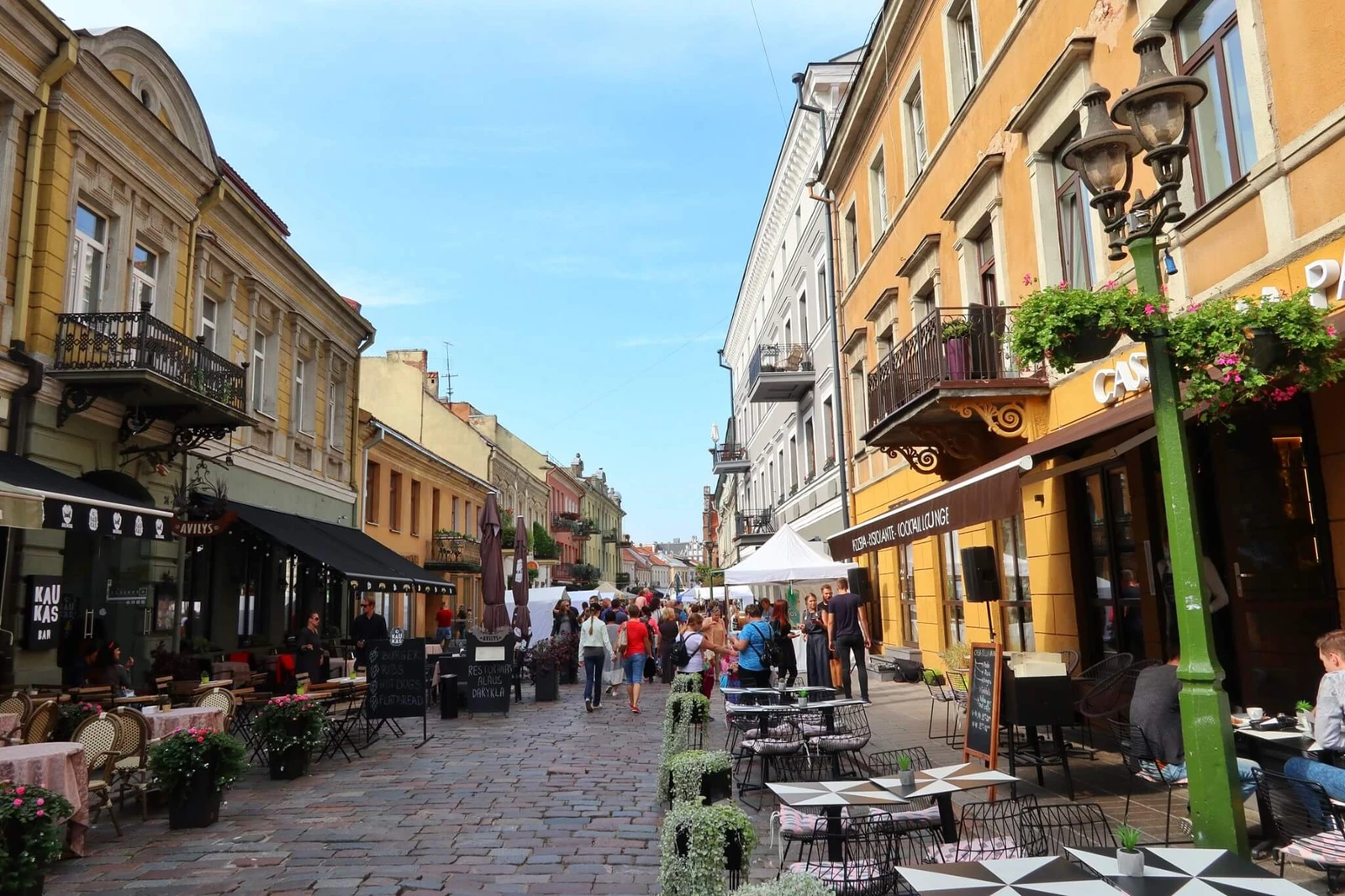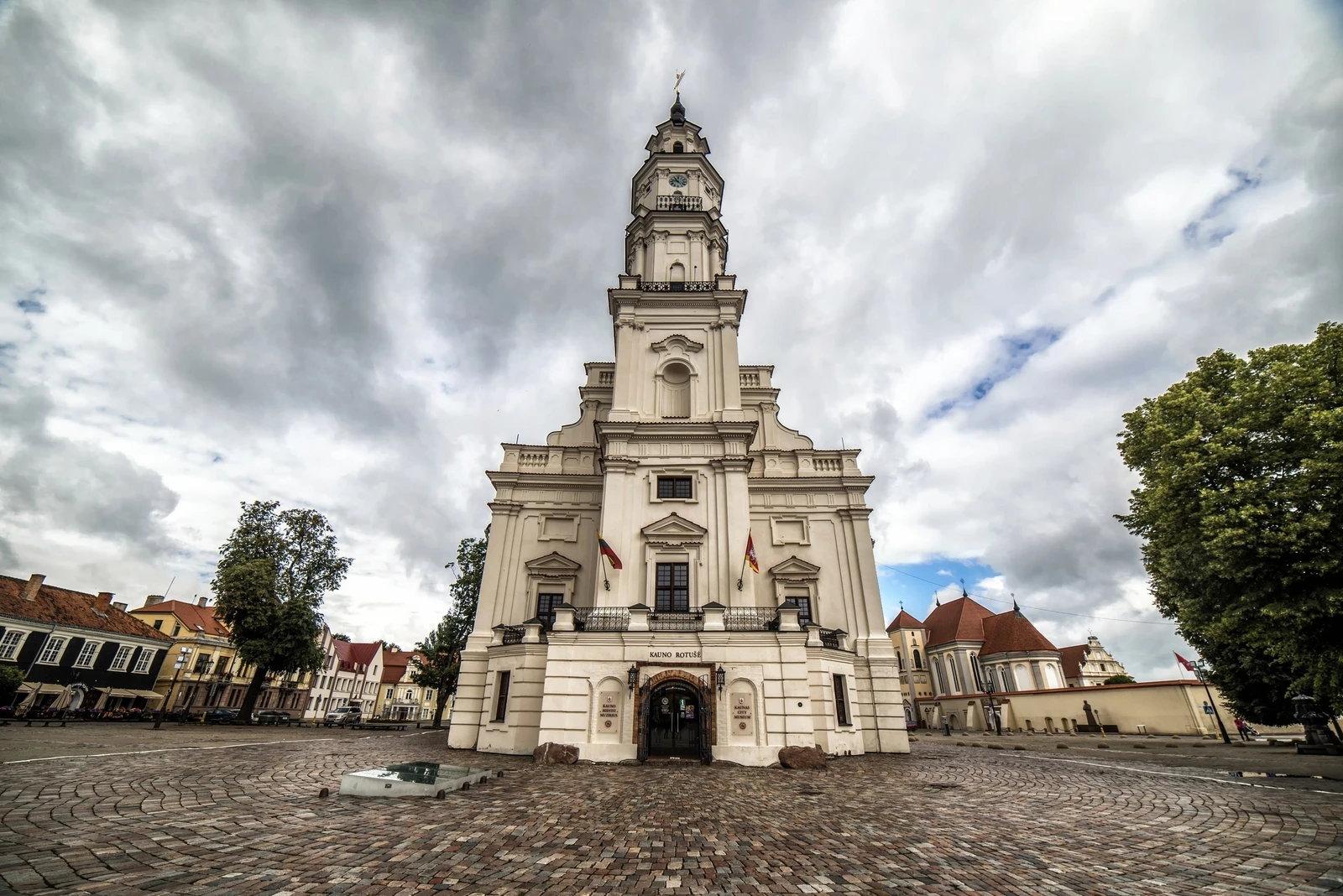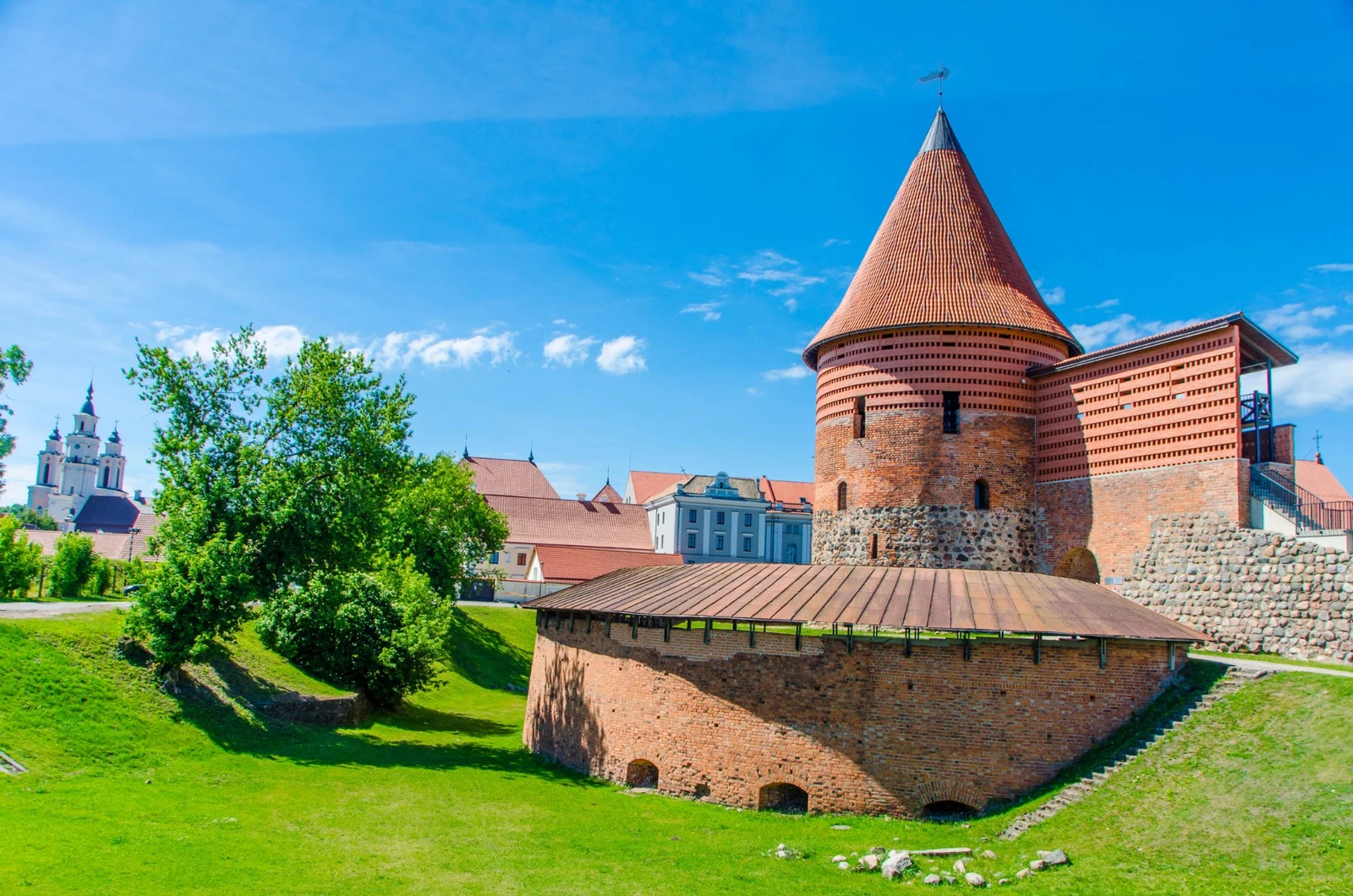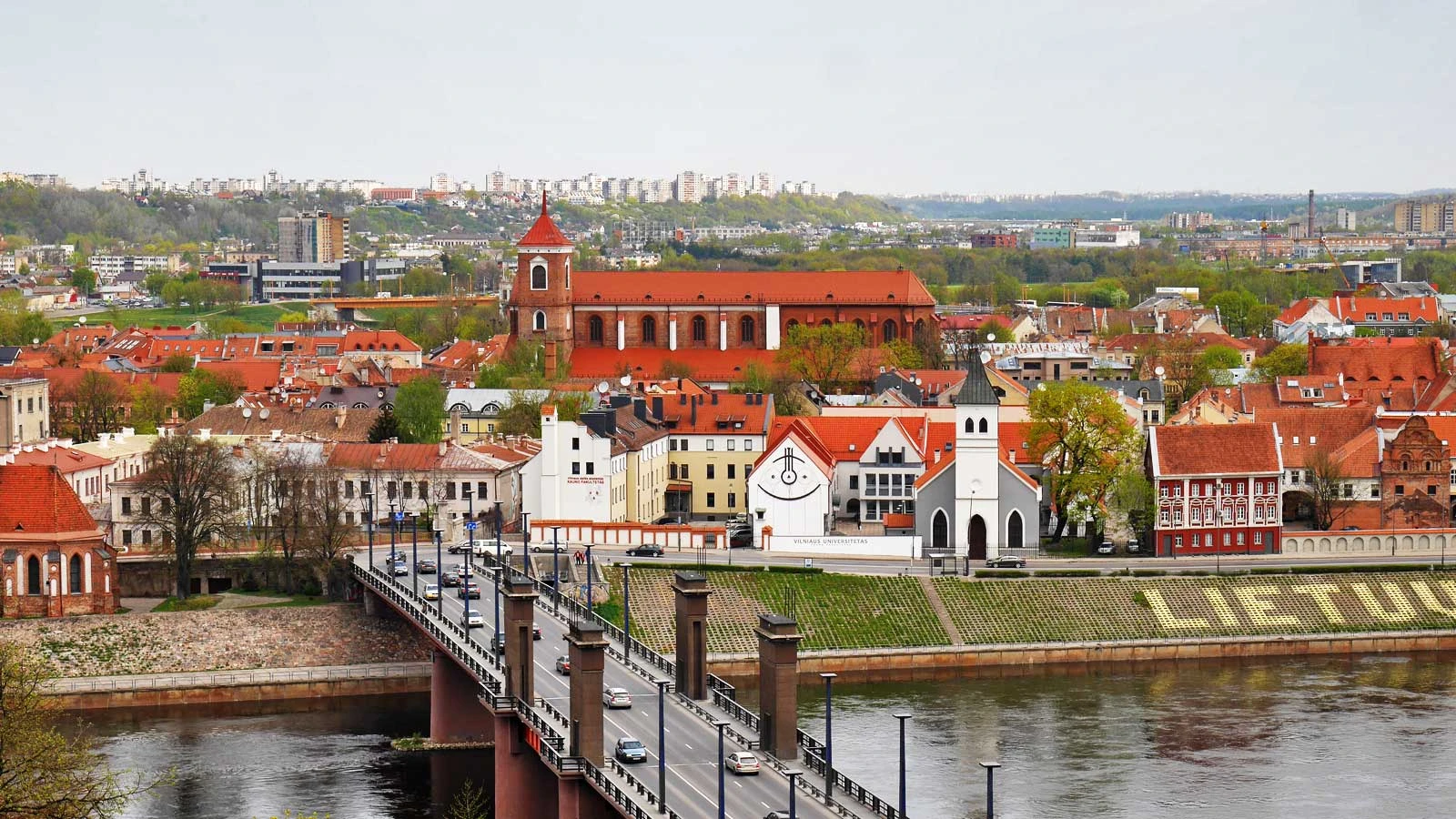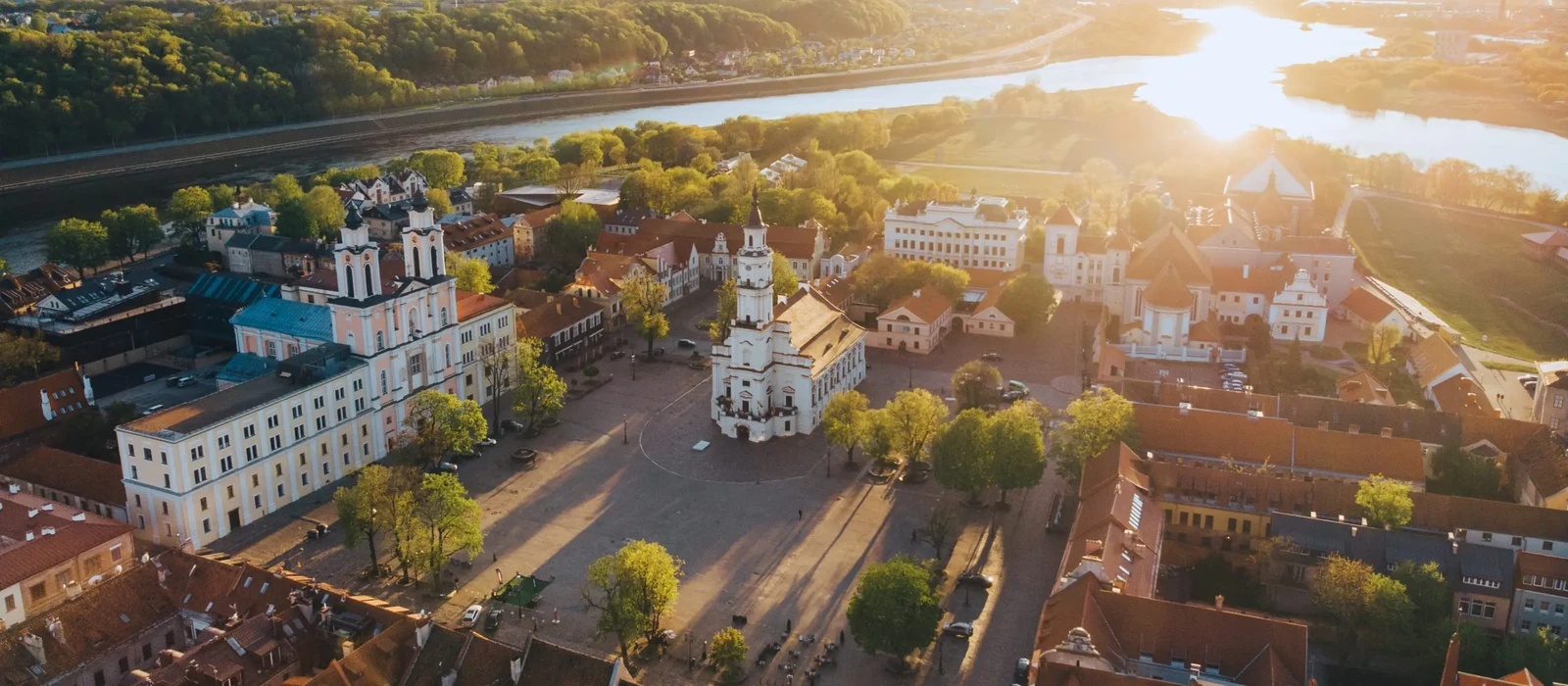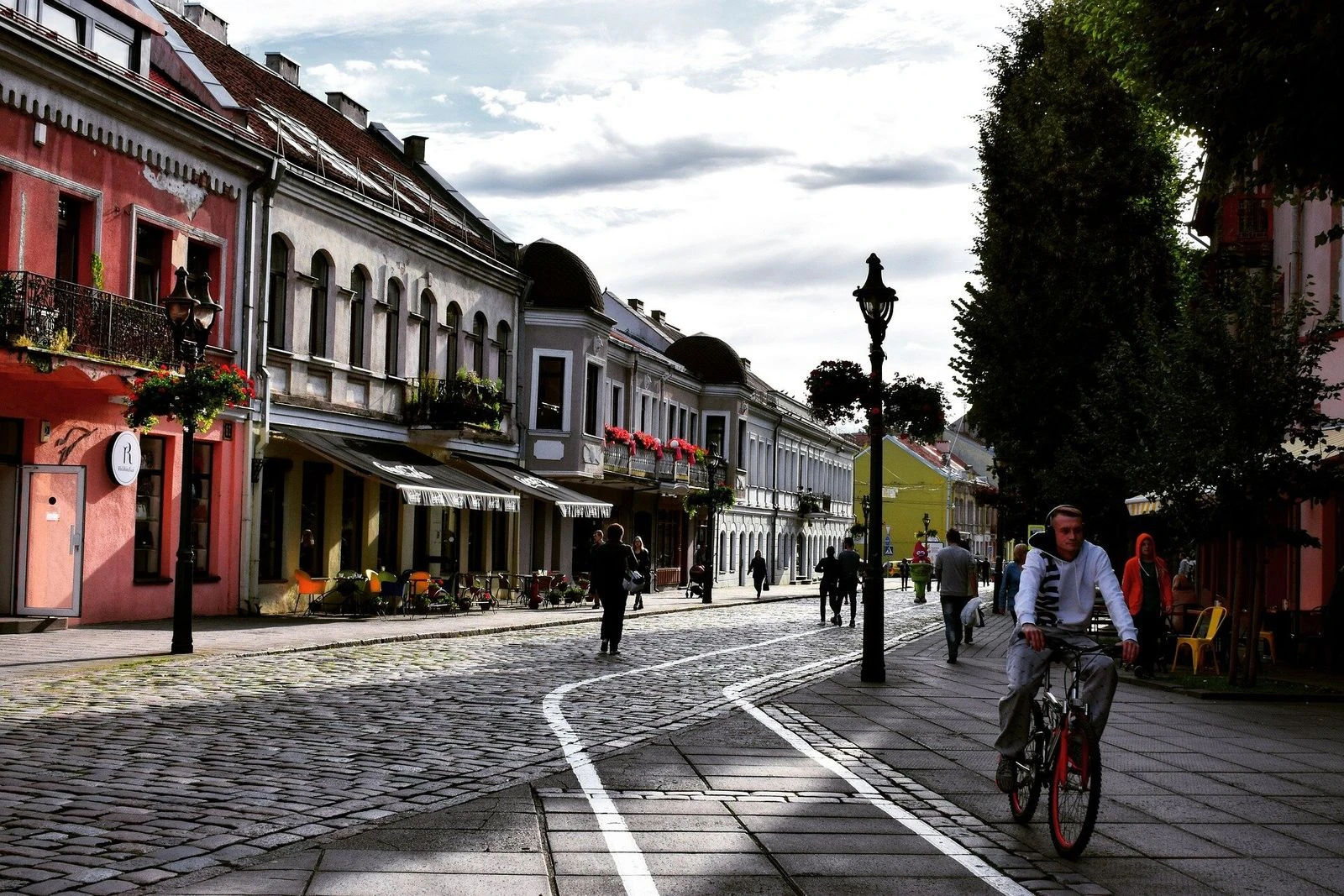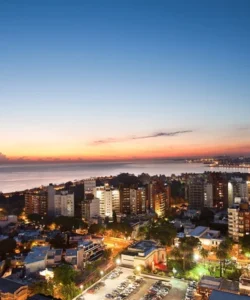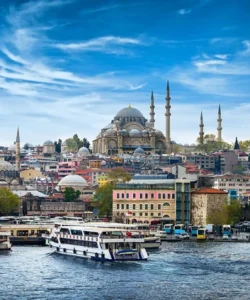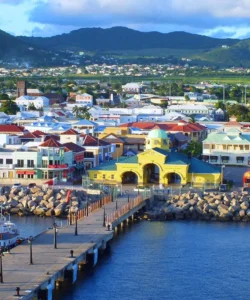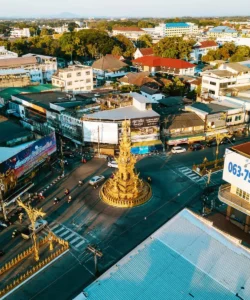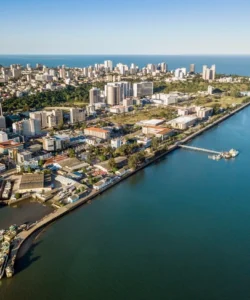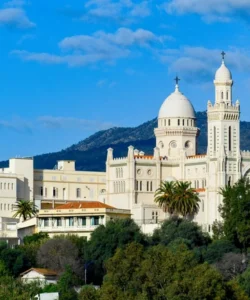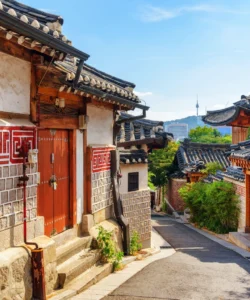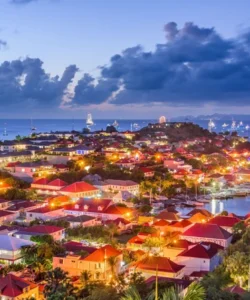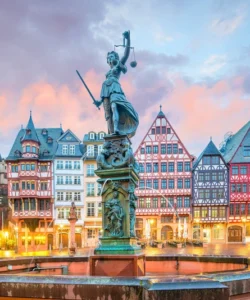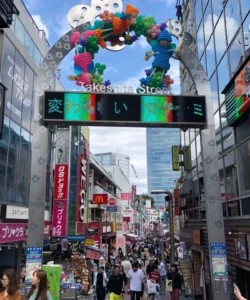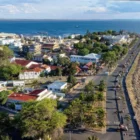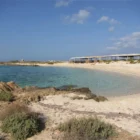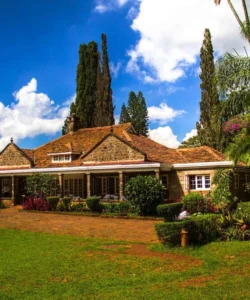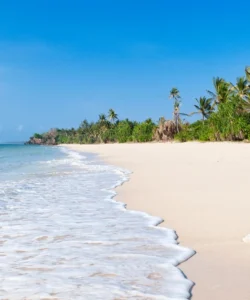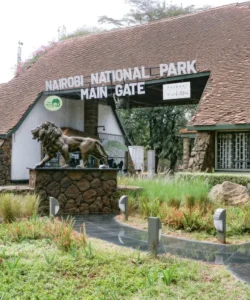Kaunas, located at the confluence of the Nemunas and Neris rivers in central Lithuania, is the country’s second-largest city and a vibrant hub of history, culture, and particularly, interwar modernist architecture. It served as the temporary capital of Lithuania between World War I and World War II (1919-1939), a period that saw an unprecedented construction boom and a unique architectural identity take root. Today, Kaunas blends its medieval Old Town charm with its distinctive modernist legacy, offering a captivating journey through Lithuania’s turbulent 20th-century history and its enduring artistic spirit.
Listen to an introduction about Kaunas

Name: Kaunas (Каунас)
Address: Kaunas, Lithuania. The city center is broadly divided into the Old Town (Senamiestis) and the New Town (Naujamiestis, especially around Laisvės alėja – Liberty Avenue).
How to get there:
Reaching Kaunas, involves a significant international journey to Europe, followed by domestic travel within Lithuania:
- From Vilnius to Kaunas:
- By Train: This is a popular and comfortable option. Trains depart frequently from Vilnius Railway Station (Geležinkelio St. 16) to Kaunas Central Station. The journey takes approximately 1 hour to 1 hour 20 minutes.
- By Bus: Buses depart very frequently from Vilnius Bus Station (Sodų g. 22) to Kaunas Bus Station. The journey takes approximately 1 hour 30 minutes. This is often the most convenient due to frequency.
- By Car/Taxi/Ride-hailing (e.g., Bolt/Uber): Driving from Vilnius to Kaunas takes about 1 hour 15 minutes (approx. 100 km west of Vilnius).
- From Kaunas Airport (KUN) to City Center: Kaunas has its own international airport (Kaunas International Airport – KUN), served by some low-cost carriers. From KUN, take local bus line 29 or a taxi/ride-hailing service to the city center (approx. 20-30 minutes).
- Within Kaunas: The Old Town is best explored on foot. The New Town, particularly Laisvės alėja, is also very walkable. Public transport (buses, trolleybuses) is available to connect different parts of the city. Kaunas also has a funicular railway.
Best Time to Visit:
Kaunas is charming year-round, but the best time for comfortable exploration and vibrant atmosphere is generally:
- Late Spring (May to early June): Pleasant temperatures, blooming greenery, and fewer crowds than peak summer.
- Summer (Mid-June to August): Warmest weather, lively outdoor cafes, and numerous festivals and events. This is peak tourist season.
- Early Autumn (September to early October): Crisp air, beautiful fall foliage, and still pleasant temperatures, ideal for walking.
- Winter (November to April) can be very cold and snowy, offering a picturesque atmosphere, but with fewer outdoor activities.
Landscape and Architecture:
Kaunas’s “architecture” is its dual urban fabric: a medieval Old Town contrasted with a dominant and historically significant interwar modernist New Town, all set at a river confluence:
- Confluence of Rivers: The city is dramatically located at the confluence of Lithuania’s two largest rivers, the Nemunas and Neris. This strategic location has shaped its history and provides scenic riverfronts.
- Old Town (Senamiestis): The oldest part of the city, characterized by winding cobblestone streets and a mix of architectural styles, predominantly:
- Kaunas Castle: The oldest brick castle in Lithuania, originally a Gothic castle from the 14th century. While largely in ruins, its remnants and a reconstructed tower offer historical insight and panoramic river views.
- Kaunas Cathedral Basilica: The largest Gothic church in Lithuania, later remodeled with Renaissance and Baroque elements, featuring a grand interior.
- Town Hall (“White Swan”): A beautiful Baroque building with an elegant white facade and tall spire, standing prominently in the Old Town Square.
- Perkūnas House: A striking late-Gothic merchant’s house, known for its ornate brick facade, one of the most impressive Gothic buildings in Lithuania.
- New Town (Naujamiestis) and Modernist Architecture: This is what truly sets Kaunas apart. During its interwar period as temporary capital (1919-1939), Kaunas underwent rapid expansion, resulting in a unique collection of over 6,000 modernist buildings. This period of intense architectural experimentation (often called “Kaunas Modernism”) earned it UNESCO World Heritage status:
- Laisvės alėja (Liberty Avenue): The main pedestrian boulevard, lined with trees and showcasing numerous modernist buildings, shops, cafes, and a distinctive fountain. It’s a central artery of the New Town.
- Ministry of Justice, Bank of Lithuania, Central Post Office: Examples of monumental modernist public buildings, often featuring clean lines, functional designs, and a blend of local and international modernist influences.
- Residential Buildings: Numerous multi-story apartment buildings showcase various modernist styles, from Art Deco influences to functionalism and national Romanticism.
- UNESCO World Heritage Status (as of 2023): “Modernist Kaunas: Architecture of Optimism, 1919-1939” was recognized for its exceptional testimony to the interwar period’s architectural boom and the development of a unique national modernist style.
- Žaliakalnis Funicular: An historic funicular railway (one of two in Kaunas) that connects the New Town to the Žaliakalnis district on a hillside, offering panoramic views.
- Confluence of Nemunas and Neris: The point where the two rivers meet is a scenic area, often with walking paths and parks.
What makes it famous:
Kaunas is famous for:
- Interwar Modernist Architecture (UNESCO Heritage): It boasts an unparalleled collection of interwar modernist buildings, earning it UNESCO World Heritage status. This unique architectural legacy reflects Lithuania’s period of independence and nation-building.
- Former Temporary Capital: Its role as the temporary capital of Lithuania during a crucial period of national revival (1919-1939) contributes significantly to its historical and cultural identity.
- Cultural Capital of Europe 2022: It held the prestigious title of European Capital of Culture in 2022, showcasing its vibrant arts scene, numerous museums, galleries, and cultural events.
- Strategic River Confluence: Its location at the confluence of the Nemunas and Neris rivers has historically made it a vital trade and defense center.
- Charming Old Town: Despite the modernist fame, its medieval Old Town offers a beautiful historical contrast with its castle ruins, cathedral, and traditional architecture.
- Laisvės alėja (Liberty Avenue): A lively pedestrian boulevard that is the heart of the New Town, perfect for strolling, dining, and people-watching.
- Art and Street Art: Kaunas has a thriving street art scene, with murals and installations adding to its contemporary urban landscape.
- Devils’ Museum: A quirky and unique museum dedicated to the collection of devil sculptures from around the world.
Differences from some other wonders:
Kaunas distinguishes itself from other cities and historical sites in several key ways:
- “Modernist Capital” Designation (UNESCO Specificity): While many cities have modernist buildings, Kaunas is unique for the scale, concentration, and specific historical context of its interwar modernist architecture, which earned it a dedicated UNESCO World Heritage status. This distinguishes it from other cities with broader architectural heritage (e.g., Vilnius Old Town with its Baroque dominance).
- Dual Urban Identity (Medieval vs. Modernist): The stark yet harmonious contrast between its medieval Old Town and its distinctly modernist New Town provides a unique urban narrative and a compelling architectural journey that is rarely found in one city. Vilnius Old Town, for instance, is predominantly Baroque.
- Rapid, Intentional Nation-Building Architecture: The modernist buildings in Kaunas were constructed during a period of intense national identity formation and rapid urbanization, making them a tangible representation of a young nation’s aspirations for modernity and independence. This socio-political context is key to their significance.
- “Optimism” of its Architecture: The term “Architecture of Optimism” used in its UNESCO designation highlights the positive, forward-looking spirit embedded in its interwar modernist designs, reflecting a period of national pride and ambition.
- Smaller City Scale with Big History: Despite being Lithuania’s second-largest city, it retains a more manageable scale than huge metropolises, allowing for an intimate exploration of its significant historical and architectural layers.
In essence, Kaunas is a captivating and distinctive wonder, a vibrant city that beautifully blends its medieval roots with a truly exceptional legacy of interwar modernist architecture, offering a unique window into Lithuania’s ambitious and resilient spirit.

